
















12. k ate d avi S r aptors of the r ockies


















12. k ate d avi S r aptors of the r ockies
18. Sober Curiou S ?
20. aS k t H e b ut CH er
22. e ating Sea S onally
23. aS paragu S g ruyère tart
24. g rilled aS paragu S and Feta Salad
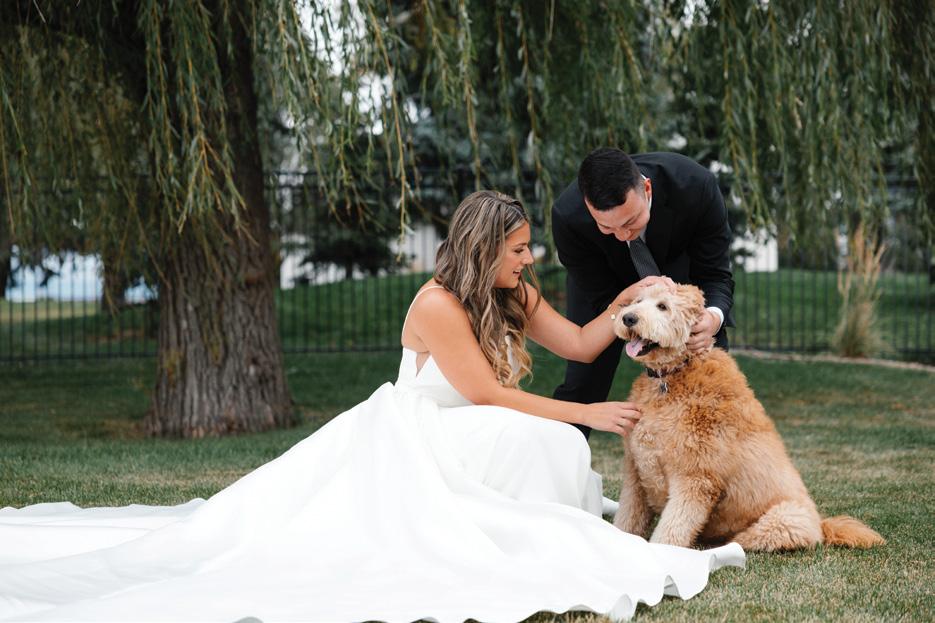






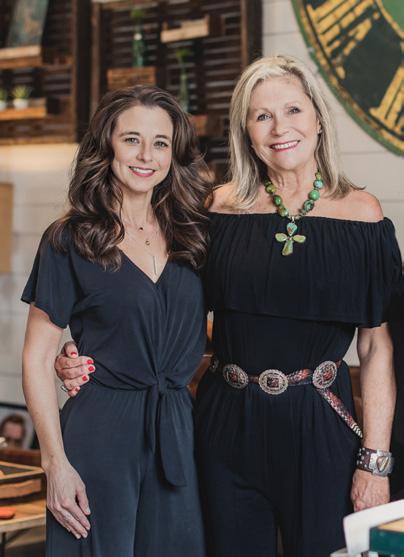
Here in Montana, we're caught between the magic of winter and the promise of spring – it's a bit of a tease, isn't it? One day it's snow boots, the next it's sunshine and sunglasses. But we wouldn't have it any other way!
The days are getting longer, the sun is a little warmer, and we're dreaming of summer and wildflowers even as we enjoy those last ski runs and snow falls.
From all of us at 406 Woman Magazine, we wish you a joyful transition – a time to embrace the beauty of both seasons.
With Gratitude, Cindy and Amanda





publisher Cindy gerrity cindy@montanasky.net
business manager daley mcdaniel daley@montanasky.net
managing editor kristen Hamilton montanakristen@gmail.com
creative & social media director amanda wilson afwphotography@me.com
design Sara Joy pinnell sara@mrsandmrpublishing.com
photographers
daley mcdaniel photography
amanda wilson photography aCe photography


view current and past issues of 406 woman at woman
www.406 w oman.com
Published by Skirts Publishing six times a year
704 C East 13th St. #138 Whitefish, MT 59937 info@406woman.com
Copyright©2024 Skirts Publishing
Want to know about great events, open houses, and more? Like us on Facebook at facebook.com/406 Woman
406 Woman is distributed in Bigfork, Columbia Falls, Kalispell, Missoula, Whitefish and every point in between. Check out www.406woman.com for our full distribution list.
Have a great story idea or know someone that we should feature? Email us with your comments & suggestions.
Interested in increasing your business and partnering with 406 Woman? Check out www.406woman.com.



How does one become a raptor expert? Her journey was somewhat unconventional. In 1973, when Kate Phillips was 13, she signed up for Barry Wakeman’s Junior Zoologists Club at the Cincinnati Zoo.
The club had a field trip first thing on Saturday mornings, and when they came back to their classroom, there was sometimes a test. Barry would ask something like, “Who can tell us the habitat for Wooly Monkeys?” and after a long question and answer period, perhaps someone got to go home with an animal that had been donated to the zoo. Kate soon became known as the ‘raccoon/fox/screech owl/kestrel’ girltaking orphaned young animals to care for and eventually releasing them back into the wild. Her parents were encouraging, but she was forbidden to bring home animals that could not be let go, usually on their property in Ohio. (No lions, or tigers, or bears).
Through the zoologist club, Kate attended a Thursday night bird skinning class with the Museum of Natural History. How could she
By Mary Wallace
What makes Kate Davis’s heart sing is watching Sibley (her most famous falcon) fly high and return to her falconry glove. It is one of the most rewarding things she gets to do. Sibley is smart and playful and has been her companion on much of her raptor journey, perching by her side for years, a lively but very well-behaved raptor as a part of the educational programs Kate has done for school children and the public in Montana and around the country. Kate has presented nearly 2,000 educational programs for over 141,000 children and adults since she founded Raptors of the Rockies in 1988.
resist? The kids were taught to skin birds for scientific studies. She got pretty good at it and became, first, a teenage taxidermist for the zoo, then for the University of Montana Zoological Museum, and eventually working in a shop for a dozen years. She also became an illustrator for the zoo’s newsletter and publications, including pen & ink drawings galore, and provided educational programs at the zoo and in the community.
In middle school, Kate read the novel My Side of the Mountain by Jean Craighead George. The story was about a young boy who ran away from home, lived in a hollowed-out tree, and kept a Peregrine Falcon. The author’s brother, John, came to Cincinnati, and with his talk about grizzly bears in Montana, impressionable Kate decided that she was definitely going to Montana. She did, indeed, move to Missoula in 1978 and earned her degree with honors in zoology from the University of Montana in 1982.
Wanting to continue her extraordinary experiences in the Junior Zoologists program as a child, she obtained the required federal and
state rehabilitation, possession, eagle exhibition, and falconry permits to keep raptors on her ranch outside of Missoula. She founded Raptors of the Rockies in 1988 with the purpose of education and to provide rehabilitation for young and injured birds. Not all rehabilitated birds are able to survive back in the wild, so 25 years ago, her purpose shifted to solely providing a lifetime of quality care for permanently disabled and imprinted raptors and falconry birds. Her first bird was Clive, a Redtailed Hawk with one eye.
The Raptors of the Rockies Teaching Team raptors have been ‘enlisted’ to act as wildlife ambassadors, educating schools and the public about raptors and resource conservation. Over the years, Kate has fine-tuned and shared her program with live birds to 141 schools and adult gatherings in western Montana and in PowerPoints on her laptop across the nation. In addition to her programs, Kate and her birds have completed 1230 tours. (And gone through seven Subarus in their travels!)

Kate Davis
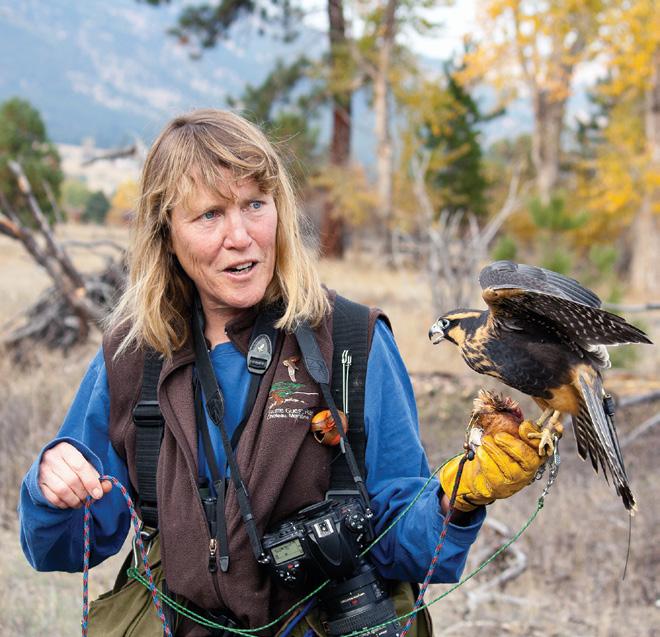
We are so lucky to live where we do. If you take the time to look for them, you can spot raptors (an owl, a hawk or falcon, or a nice turkey vulture). If you find that they are plentiful in your area, it is a sign of the good ecological health of our landscape.
In 2001, Kate and her husband, Tom Davis, moved from their rental and purchased a perfect property better suited to her menagerie, and they moved from the Clinton area to their new place on the Bitterroot River, south of Missoula.
With two carpenters and the generosity of Raptor Backers, they built enclosures and habitats to accommodate the birds' needs with water baths, perches, and ledges while maintaining security and adequate open space. With the extreme cold temps in the winter, they have housed several of the birds inside. It is not unusual for Tom to casually announce that there is a falcon perched on the refrigerator if anyone is looking for one. (Sonora, the Aplomado Falcon) Even though many of the birds have been teaching participants to large groups throughout the year, they need the sanctuary of every square foot of the Raptor Ranch property, which is quiet and private and allows the birds to live as naturally as possible.
She currently has 12 birds in her care at the Raptor Ranch. Kate maintains all of the required permits and reporting required to
care for and exhibit the birds, with no employees or volunteers but with an enthusiastic Board of Directors. It takes 6000 mice, 650 quail, and who knows how many pounds of elk, bear, and deer meat to keep everyone fed; it’s 365 days-a-year care. And no retirement in the plans; a few birds are just 2 years old this spring.
The birds she brings to her presentations naturally have the personality that makes them fit to teach; most of them are imprint birds, showing up as downy chicks. Sibley, her most famous falcon (who is still part of the family but is now retired from hunting), has been her mainstay for 22 years. Each Teaching Team member has a unique history and distinctive personality. To ‘meet’ the birds in the Raptors of the Rockies family, visit www.raptorsoftherockies.org and click on each name in the list. There are currently two American Kestrels, two Great Horned Owls, a Rough-legged Hawk, a Northern Saw-Whet Owl, a Barred Owl, two Peregrine Falcons, an Aplomado Falcon, a Golden Eagle, and a Bald Eagle.
Kate and her birds were guests on the popular "Pea Green Boat" radio show on KUFM,
Montana Public Radio (100 appearances!), and she has been featured on local TV and the award-winning PBS program Bird Watch, Ducks Unlimited TV, and the Animal Planet. She has also presented at a TEDx Talk, “Communication in the Dark,” featuring Jillian, the Great Horned Owl. The link to this can be accessed on her website, raptorsoftherockies. org.
But Kate is not just a falcon wrangler! All of the birds are the subjects and sources of inspiration for Kate's artwork - drawings, paintings, etchings, photography, welded steel sculptures, and writing. Her welded sculpture pursuits were under the tutelage of Bill Ohrmann in Drummond, and her big metal birds reside all over the house and yard. The zinc-plate etchings began in the late 1980s with nitric acid and solvents, but now with a very much safer and happier blend of PETG plastic and water-based inks. (Washable in the sink, edition of 5). “Art Inertia” she calls it, with 19 completed in 2024 - all portraits of the Teaching Team and local birds and mammals. There is some breathtaking photography on her sister site: raptorsoftherockies.com.
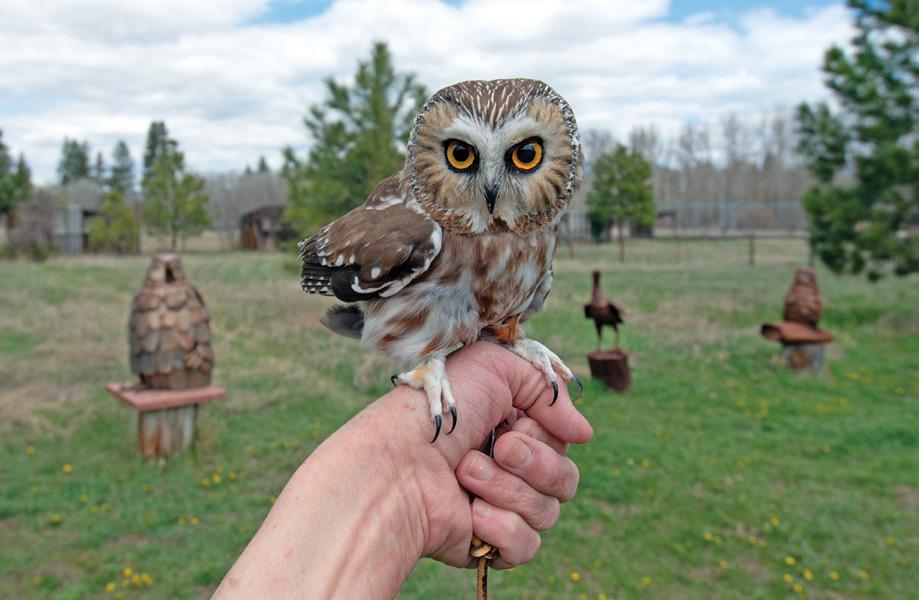




Just GO OUTSIDE! Day or night. Enjoy the vegetation, the clouds, the geology, and the wildlife. Get yourself some binos (binoculars) and a field guide and get out there!
Kate has written seven books, including Raptors of the West, Falcons of North America - her personal favorite, with 260 photos, 10 chapters, and six species accounts – plus the ever-popular Birds are People, Too She has been awarded the National Outdoor Book Award and the Montana Book Award Grand Prize.
In 2017, Kate was presented with the Lifetime Conservation Achievement Award. Her favorite honor, however, was a speaking engagement in April 2023 at the Cincinnati Zoo. The title of the talk was “Fifty Years as a Junior Zoologist”. Several of her ‘fellow’ Junior Zoologists attended the event, and it brought her full circle - right back where it all began!
One of her favorite projects is her weeklong art program for kids ages 7-11, in partnership with the Missoula Art Museum, where live birds serve as the greatest of models. For 22 years, this program with fellow artist Bev Beck Glueckert has begun with presentations on avian anatomy and function, followed by sketching & painting, and
then paper mache sculpting sessions. She tells the kids that she’ll come over in ten years to make sure they have their big owl or eagle, and sure enough, many of them do. She was once approached by a towering man in a grocery store who confessed, “My mom threw my owl away when I went to college.”
She and her raptors are celebrating 37 years of education this year. “We are so lucky to live where we do. If you take the time to look for them, you can spot raptors (an owl, a hawk or falcon, or a nice turkey vulture). If you find that they are plentiful in your area, it is a sign of the good ecological health of our landscape.”
Raptors of the Rockies is a non-profit 501(c)(3) program funded by donations, grants, program fees (2%), and merchandise like cards, calendars, and book proceeds. Since 1988, Raptors of the Rockies has benefited from the generosity of hundreds of individuals and public and private organizations whose generous support has allowed them to continue their mission of raptor education. To become a Raptor Backer, click on the ‘donate’ button at www.raptorsoftherockies.org.

At the end of each and every program, Kate has always invited attendees (adults and children alike) to go outside and hoot up an owl. Kate tells the youngsters that, when she was their age, she could go outside at dusk and imitate a Barred Owl call, and the owls would show up and hoot right back. And then she demonstrates how to do it - “Hoot, Hoot, Hoot… HOOT Hoot!” To this day, she still has adults come up to her in public and exclaim that they remember coming to her program in grade school and learning to hoot at the end. What could be sweeter?
So that is her advice…”Just GO OUTSIDE! Day or night. Enjoy the vegetation, the clouds, the geology, and the wildlife. Get yourself some binos (binoculars) and a field guide and get out there!”
And do yourself a favor and take a little adventure with Kate and her raptors by visiting the website. There is seriously so much fun content on there! Then get outside and hoot up an owl!




By Mary Wallace
Great news for the sober curious! There is suddenly a plethora of producers that are working to create zero-proof spirits, effectively making it possible to do just that (drink more cocktails and less alcohol). Today’s zero-proof spirits have prevailed over earlier dissatisfactions between the taste and feel of a mocktail and the taste and feel of a cocktail.
There has been a noticeable shift in the way people approach social drinking. More and more individuals are seeking alternative drinks to alcohol that allow them to enjoy the same social rituals without the downside. From N/A beers and wines to sophisticated spirit alternatives, the market for these products has expanded at an unprecedented rate since 2019. With the beverage industry experiencing a significant transformation with the rapid rise of these non-alcoholic alternatives, today’s zeroproof alternatives are certainly worth an exploration.
Zero-proof spirits are produced in much the same way as full-proof liquors - by the distillation of grains, fruits, vegetable, or sugar - the difference is that zero-proof have NOT gone through any fermentation process.
Some zero-proof spirits are created through a process called distillate reconstruction, where natural raw ingredients are sourced and their essence distilled much the same as their liquor counterparts.

The fermentation step is skipped and the spirit is then reconstructed to match the unique nose, flavors, and mouthfeel in a full-proof cocktail.
Ritual Zero-Proof Spirits, which are a favorite at Bigfork Liquor Barn, are made from the ground up - using all-natural botanical flavors which are distilled individually to lock in their purest flavor, then carefully blended to create a sophisticated profile. From Siberian pine to Mexican blue agave to American oak, they use the essences that make the spirits we’ve all come to know & love. The batches are microfiltered, and every bottle is date stamped for freshness. The result is a delicious alternative to delicious originals.
Ritual’s Zero-Proof Tequila Alternative is tropical and earthy, lending balance and heat to a margarita.
The Whiskey Alternative is soft and smooth, round on the tongue, with a soul-warming finish. The Gin Alternative is bright and refreshing, with a crisp bite that mixes beautifully. Their Rum Alternative has all the warm vanilla, toasted spice, and velvety decadence of dark rum. And their Aperitif Alternative is bright, bitter, and herbaceous with a spiced citrus finish.
According to the makers at Ritual Zero-Proof Spirits, the goal wasn't to replace liquor - ”Bite your tongue!” They weren't interested in a glass of "something” or in new-age goop that defies explanation, or fancy spa water that bears no resemblance to liquor. They weren’t satisfied until it tasted and smelled and felt like the real thing.
But does it really taste just the same? The producers at Ritual Zero-Proof Alternatives say that it tastes different in the way that one brand of tequila tastes different from another or one brand of whiskey tastes different than another.
Zero-proof spirits are produced in much the same way as full-proof liquors - by the distillation of grains, fruits, vegetable, or sugar - the difference is that zero-proof have NOT gone through any fermentation process.
For cocktail connoisseurs, there is a lot of flexibility in how to enjoy zeroproof cocktails. They can be substituted 1:1 in any favorite cocktail recipes. They can also be mixed 50:50 for half the alcohol. Another popular way to imbibe is to alternate regular cocktails with zero-proof throughout the evening.
The best part is that it isn’t necessary to come up with exotic mixers to create some made-up flavor. Ritual’s Gin Alternative is used the same way you use gin. Swap the Tequila Alternative in a favorite margarita recipe. Replace traditional rum with the Ritual Rum Alternative in a Pina Colada. Make an Old Fashioned with Ritual’s Whiskey Alternative 1:1. You can also pour it neat, splash it on the rocks, or mix it with tonic or juice just as you like it.
According to Carli Seymour, a founder of Montana Bar Fairies (which awards those making a choice to arrange for a sober ride home Saturday nights with specialty coffee gift cards), “It’s more about being mindful of one’s alcohol consumption and making better decisions and drinking responsibly. What if we normalized bars promoting both alcoholic and nonalcoholic options as a matter of course? What if the bartenders realized it could be good for business?”
FYI - An informal survey revealed that in bars that do offer these new zeroproof spirits, those drinking non-alcoholic drinks spend roughly $9 more per person than those drinking regular cocktails.
Socially, embracing the non-alcoholic trend can be incredibly liberating - allowing everyone to participate in social events and remain part of the festivities AND without the hangover.
According to FORBES magazine, the ‘sober curious’ movement is not just a fleeting trend. It’s a shift in the way people and generations are interacting with and thinking about alcohol use. The movement refers to individuals becoming more mindful of their alcohol consumption without necessarily committing to complete abstinence. It is expected that the market for nonalcoholic drinks will continue to grow as Americans increasingly demand more options.
A favorite zero-proof cocktail from the crew at the Liquor Barn is the popular RITUAL NEGRONI. For this drink, you’ll need:
1 1/2 oz.
Ritual Aperitif Alternative
1 1/2 oz. Ritual Gin Alternative
Garnish: orange
Fill a mixing glass with ice. Add 1.5oz of Ritual Gin Alternative and 1.5oz of Ritual Aperitif Alternative. Stir the ingredients in the mixing glass for 20-30 seconds until well combined. Strain the mixture into a rocks glass filled with ice. Garnish with an orange peel, and you’re ready to serve!
In a recipe like this, it is easy to split Ritual for the Aperitif and your favorite regular proof gin 50:50 resulting in half of the alcohol. Or try mixing Ritual’s Aperitif Alternative with ginger ale, ice and an orange slice for a delicious "Aperol Spritz." Fewer calories. Tastes just like the real thing - if not better.
The Bigfork Liquor Barn also carries the popular Dr. Loosen, Waterbrook, and Funkelwurtz Zero, Mas, and Fre non-alcoholic wines, as well as their staff picks for zero-proof beers from Best Day Brewing, Fremont, and Athletic Brewing Co. Stop in and let them help round out your selection of regular and zero-proof beverage options before your next party or gathering.
Cheers to mindful drinking!
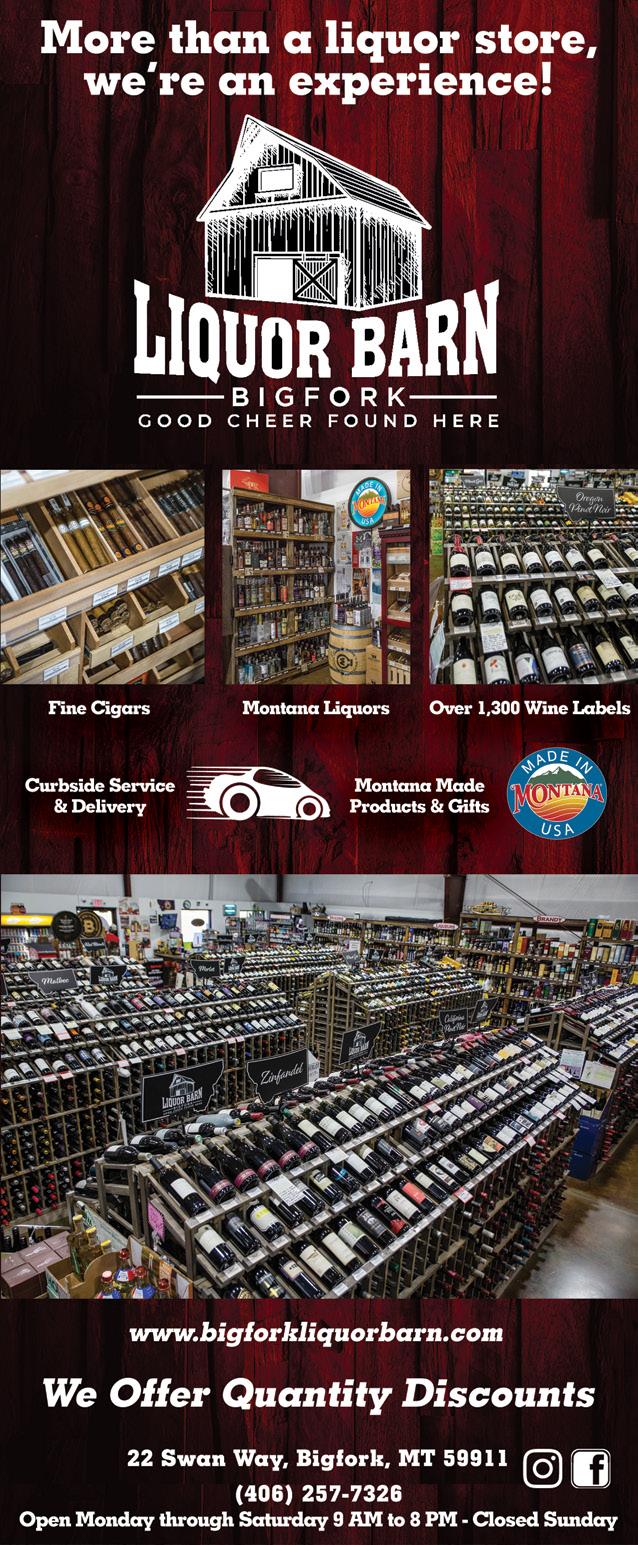


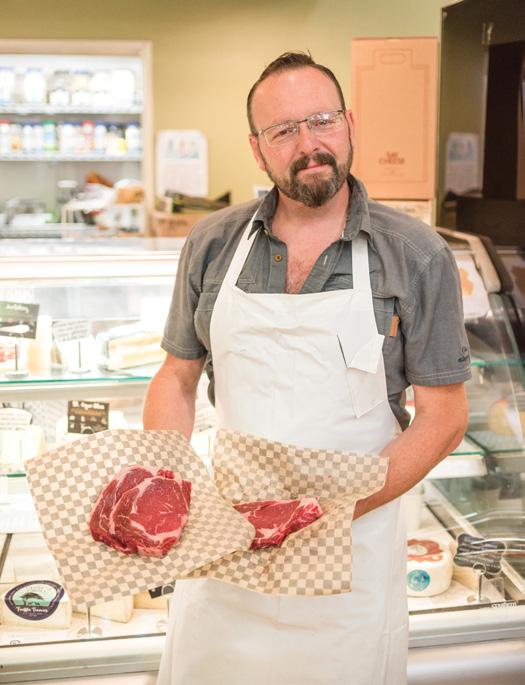



By Rebecca Voorhees - www.divadicucina.com
a sparagus
I am a firm believer that you should eat “seasonally,” or include foods in your meals that are grown at the same time of the year you eat them. For example, that means strawberries in the spring and summer, and pears in the fall. Eating seasonally is important and carries benefits to your health and your wallet.
At first glance, eating seasonally may seem simple—you eat foods that are in season, or being grown and harvested at the time of the year when you buy them. But there’s more to it than just being a trendy food movement. There are real benefits to eating foods that are available at their peak right now.
Perhaps the biggest tangible benefit of eating seasonally is that you’ll save money at the grocery store and farmer’s markets. When you buy what’s in season, you buy food that’s at the peak of its supply, and costs less for farmers and distribution companies to harvest and get to your grocery store. It may seem like common sense, but it’s one of those things many of us ignore when we’re shopping.

Since asparagus is in season and plentiful at the market right now, I thought I would share a simple, yet elegant asparagus recipe that will excite your palate.
However, the best consequence of eating seasonally is that you get the best tasting, healthiest produce available. The same reasons that keep the cost of seasonal food down also drive its quality up: The food is grown closer to you, so it doesn’t spoil on its trip, it’s harvested at the peak of its season (and sold during its season) before it spoils. Ideally, this means you’re getting fruits and vegetables that haven’t had time to lose their flavor or their health benefits by sitting in a shipping container for a trip across the ocean or in a truck driving across the country.
If you have yet to attend a local farmer’s market, add that to your bucket list. It is such a fun way to spend time with your spouse, friends, or kids and there is nothing quite like meeting the farmers themselves.
Here’s a list of some spring (March–June) produce to keep in mind when planning out your meals and recipes
• Apples
• Apricots
• Asparagus
• Avocado
• Bananas
• Broccoli
• Cabbage
• Carrots
• Celery
• Collard Greens
• Garlic
• Lettuce
• Mushrooms
• Onions
• Peas
• Pineapple
• Radishes
• Rhubarb
• Spinach
• Strawberries
• Swiss Chard
• Turnips
Make sure to check out my recipes for my Asparagus
Gruyére Tart and Grilled Asparagus and Feta Salad which are both featured in this issue.
The final product looks impressive and tastes just as good. This asparagus tart is perfect as an appetizer or a side dish with brunch. You really can’t go wrong serving it warm or cold.
You have this nice flaky crust topped with the melted gruyére cheese that brings a nice little nutty flavor, and the asparagus that is lightly seasoned with lemon pepper. It’s perfection!
This dish is easy to make and requires hardly any prep time at all. Enjoy!
stePs:
• Preheat oven to 400º.
• On a floured surface, roll the puff pastry into a 16-by-10-inch rectangle and trim uneven edges.
• Carefully transfer the pastry to a baking sheet.
• Using a knife, lightly score pastry dough 1 inch in from the edges to give it a border. This identifies the boundary you will put your cheese and asparagus in.
• Using a fork, poke the dough inside the rectangle at 1/2-inch intervals.
• Bake pastry until golden, about 15 minutes.
• While the pastry is baking, trim the bottoms of the asparagus spears to fit crosswise inside the tart shell.
1/4 c flour, for work surface
1 sheet frozen puff pastry, thawed
2 c gruyére cheese, shredded
1 bundle thin asparagus spears olive oil
lemon pepper sea salt
• In a large dish, toss the asparagus with olive oil, lemon pepper, and salt.
• Remove the pastry shell from the oven. (If your pastry swells up, lay a clean kitchen towel over the top and gently press down until it is about a 1/2” tall.)
• Evenly sprinkle with the shredded gruyére.
• Arrange the asparagus in a single layer over gruyére, alternating ends and tips.
• Bake until spears are tender, approximately 15–20 minutes.
• Allow the tart to cool and then cut into squares using a pizza cutter.
For more great recipes visit www.divadicucina.com
By Rebecca Voorhees - www.divadicucina.com
There are just so many ways to prepare this elegant vegetable, but I think my favorite way to eat the lovely green spears is grilled asparagus and feta salad. This recipe is so good that my husband and I will eat an entire batch. So, if you are cooking for more than two people just go ahead and double or triple the recipe. Trust me you will eat it all! Plus, it makes amazing leftovers as a chilled salad.
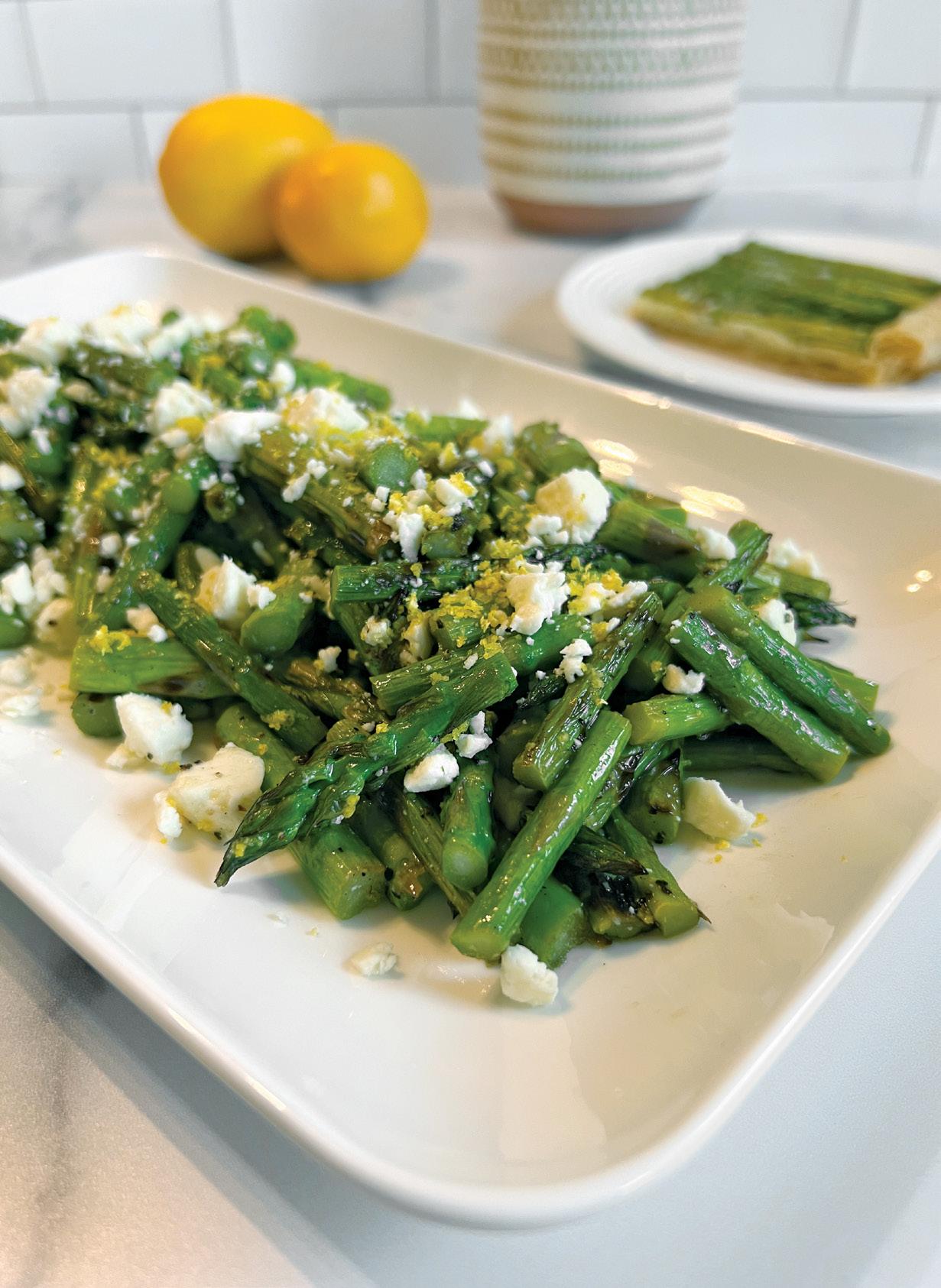
There is so much flavor in this salad with that char flavor from the grill, fresh lemon zest, and rich creamy feta cheese. It is light and refreshing with that zest of lemon, perfect for spring or summer. We just serve it with a simple grilled chicken breast seasoned with nothing more than salt and pepper and it is the perfect complement. This, my friends, is good eating.
IngredIents:
1 bunch thick asparagus, ends trimmed
3 tbsp olive oil, divided
1/4 tsp kosher salt
1/4 tsp pepper
zest from one lemon
1 tablespoon freshly squeezed lemon juice
1/2 c crumbled feta cheese
stePs:
• Preheat the grill to about 325º.
• Place the asparagus in a baking dish and coat with 2 tablespoons of the olive oil and then season with salt and pepper.
• Place the asparagus on the grill making sure that they are perpendicular to the grates so that they don’t slip through.
• Close the grill and cook for 3 minutes.
• Roll the asparagus over and cook for another 3 minutes.
• Remove the asparagus and transfer to a cutting board.
• Allow the asparagus to cool for 5–10 minutes.
• Cut the spears into 1–2” pieces.
• Place the cut asparagus into a medium bowl and toss with the remaining tablespoon of olive oil, lemon zest, lemon juice, and half of the feta.
• Transfer the salad to a serving dish and top it with the remaining feta and serve warm or at room temperature.
For more great recipes visit www.divadicucina.com



1-1/2 pounds small, fresh brussels sprouts, dried end trimmed, and cut in half 1/2 pound fresh Cremini mushrooms sliced in half
1/4 cup genesis kitChen MushrooM sage infused olive oil

1 medium shallot thinly sliced
2 tablespoons genesis kitChen PoMegranate BalsaMiC vinegar
1 teaspoon salt fresh ground pepper to taste 270 Nucleus Avenue, Columbia Falls, MT
heat a heavy duty 12" sauté pan, add the MushrooM sage infused olive oil. add the shallot and sauté over medium until translucent. add the mushrooms and brussels sprouts and sauté over medium high heat until the mushrooms and brussels sprouts begin to caramelize (about 6 minutes). add the 2 tablespoons of PoMegranate BalsaMiC to the pan stirring and scraping to de glaze it. (Make sure to scrape up the browned bits of mushroom and shallot at the bottom while evenly coating the brussels sprouts). season with salt and pepper to taste. serve hot.
406-897-2667 - www.genesis-kitchen.com

By Christine Carbo
In the good ‘ol days of crime fiction writing, technology was still relatively minimal, or at least cumbersome. Creaky transistors, no cellphone GPSs, no DNA testing… Identifying a culprit was harder for a detective, which is exactly what crime fiction authors love. Difficulty, conflict, roadblocks… They all make up the cherished well writers fetch water from because without complications, plots are uninteresting.
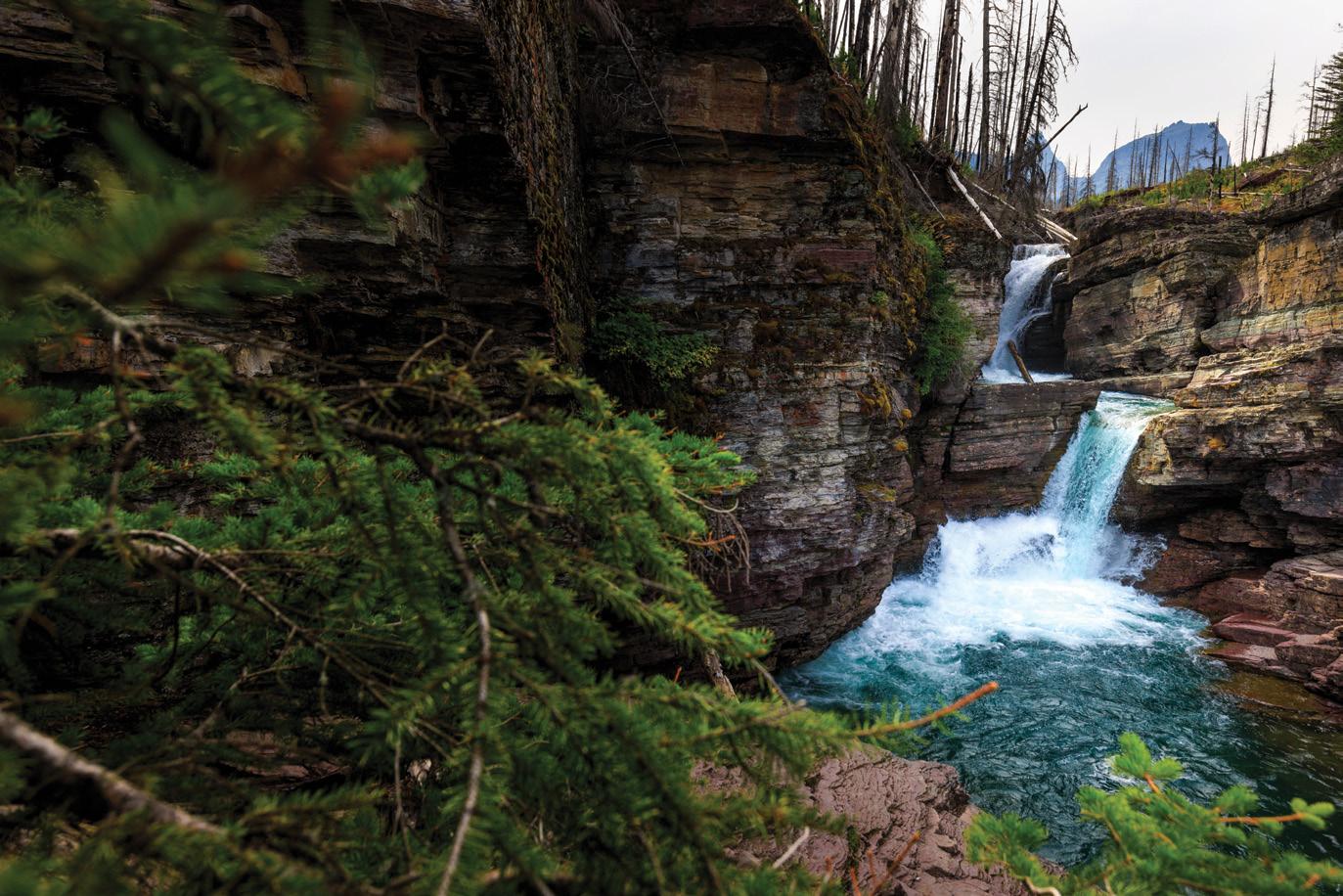
So, what’s a contemporary crime-fiction author to do when it becomes very easy to identify and track people down? When cell phones come with GPSs, making each one a potential tracking device? Even if your perp buys one of those cheap disposable “burner” phones, it’s pretty much no good after a day or two. And if your potential suspect logs onto the Internet to contact someone or research something, like say, what’s the best untraceable substance to poison someone with? Well, forget about it. We all know that every aspect of someone’s Internet history can be traced.
And as far as public places, cameras are just about everywhere now, especially all those areas a perp might pass through when trying to get out of dodge: airports, bus terminals, train stations, gas stations, rest stops, convenience stores, fast food restaurants, ATMs, toll booths, intersections… And I haven’t even mentioned drone technology and its ability to record and analyze thousands of images at a time. AI offers facial recognition, automated license plate
analysis.
It's all interesting stuff, and the crime writer can and will use some of these advancements to their advantage, but often, when you don’t want things to be so easy, darn that technology. It can become the contemporary crime fiction writer’s nemesis. Cell phones, security cameras, tracking devices… they all make it much more difficult to set a detective or sleuth in a situation where solutions aren’t readily available. Gone are the days of writing about detectives and sleuths without considering all the ways in which technology alters the way perpetrators and even spies are pursued. When a writer of killers can’t make it difficult to track someone down, to figure out whodunnit, the story gets very short.
Lucky for me, I live near the wilderness, which at least still offers up a few remote places where technology doesn’t work quite as well. Not only do I love nature, especially the stunning, commanding Glacier National Park and find inspiration from it, I enjoy exploring the interdependencies and conflicts between our mountain communities and the natural world. I relish trying to make the heart of the natural world beat on the page while still pulling the reader along with a suspenseful storyline. Although increas-
ingly more challenging as cell towers widen their ranges and satellites get stronger, the fact that I can still get someone off the grid is a plus.
Let’s say you’re a hitman and you’ve been hired to commit a murder. Now imagine that the person you need to take out loves hiking in Glacier National Park. They relish taking in the sights of snow-capped peaks, the sounds of rushing waterfalls, and the scent of the fresh pine in the cool higher elevation air. And they hike often. During the summer and early fall months, they set out for the park every Thursday on their day off. Rather than using a bullet, some poison, or some other obvious means of murdering someone, you figure it will be much cleaner to simply follow them into the national park, track them out to some remote location and make them disappear in the park’s vast and unforgiving wilderness.
Perhaps you could push them off a steep ledge or off some slippery rock into a raging, skull-crushing stream. Who would know whether they simply slipped or lost their step? And finding the victim? The terrain might make it difficult for Search and Rescue to triangulate the location of the cell’s transmitted signal.
local author} Christine Carbo
Accidents happen all the time in Glacier. It would be an okay plan for a killer. Maybe a little messy, not knowing exactly where your victim might end up, how far they’ll hike, or how you’ll lure them to a good launching pad. But it’s not a horrible plan. In fact, a woman pushed her fiancé off a cliff in Glacier National Park in 2014, and before that, a man who was lined up to testify in a money laundering scheme in a Whitefish bank died in a mysterious fall off a cliff in Glacier in 1991. He was the bank’s vice president and died less than two weeks before his trial. People always wondered if something shady occurred, but nothing was ever proven. Those were early, cumbersome cell-phone days. Case in point. I’ve also used the cliff idea in one of my novels in my Glacier Mystery Series.
But there’s one more concern: the wildlife cameras.
Biologists often use cameras set in many locations around the park to conduct various wildlife studies.
So, let’s say you’ve followed your victim out somewhere in the Northeast corner of the park
and have located a good slippery rock above a nicely raging stream in the early summer of 2019. Did you consider that a lynx study was being conducted by a group of biologists? And before that, wolverines were being studied by implanting transmitters, but researchers also relied on data captured from wildlife cameras. These cameras, although they were aimed only high enough to catch your feet, legs, and possibly waistline, would give a lot of information to a detective if your story was set during the time one of these studies was being conducted.
But ah, you say, this can play to the writer’s benefit too. Indeed, it can. And I’ve used it as part of a plot in my novel, Mortal Fall. I’ve also had my detectives use entrance/exit cameras to gather information in one of my books, The Weight of Night
All in all, I’d say that my little trips into nature to write crime fiction have been liberating –for the most part – for me and my protagonist. I’ve turned detectives, special agents, Glacier National Park rangers and the people they are pursuing loose in the wild and generally let them go where they desire.
And the perpetrators they’re trying to hunt down… well, it’s okay if they don’t know about a few webcams and wildlife cameras strategically placed in the wild when studies are occurring. Shhhh, don’t tell them.
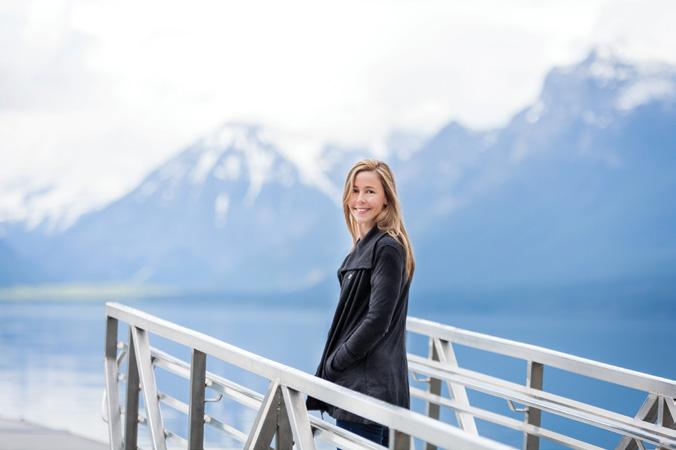
Christine Carbo is the author of the Glacier Mystery novels, an ensemble-series set in and around Glacier National Park. Her books include The Wild Inside, Mortal Fall, The Weight of Night, and A Sharp Solitude. She is a recipient of the Women’s National Book Association Pinckley Prize, the Silver Falchion Award, the High Plains Book Award, and was a finalist for the Barry Award. Christine is a Florida native but quickly fell in love with Montana when she moved to the Flathead Valley in the late seventies. She has an MA in English/Linguistics and taught college-level courses for over a decade. She still teaches, but in a vastly different realm as a Pilates instructor. She lives in Whitefish, MT and often draws inspiration from the wild setting surrounding her. Find out more at ChristineCarbo.com.
Read the Lynx Study from Glacier National Park Conservancy website to learn more about wildlife cameras and how they captured lynx and numerous other species activity residing in park boundaries https://glacier.org/newsblog/lynx-study-published/



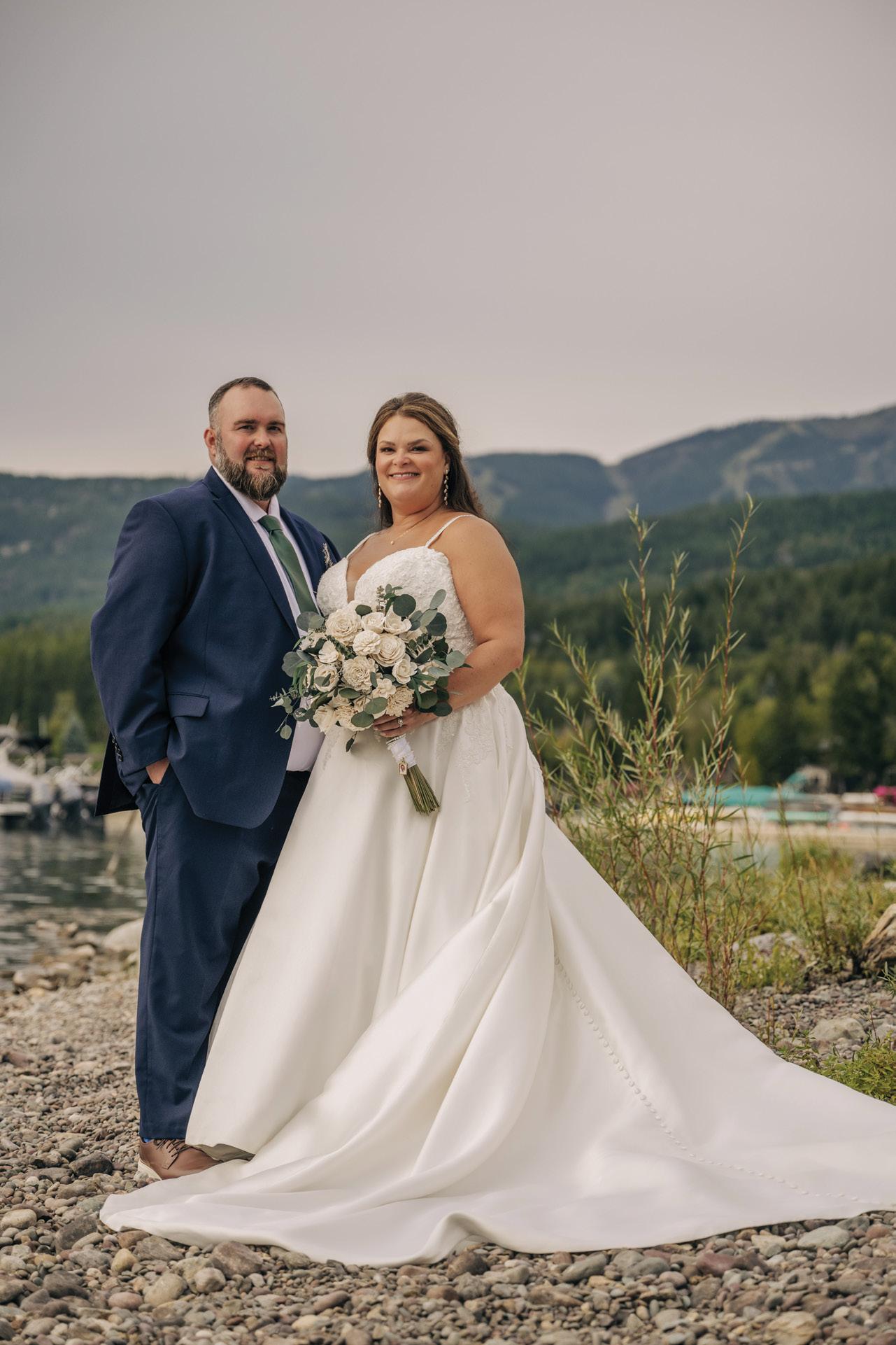
September 15, 2024 - The Lodge at Whitefish Lake - Photography by

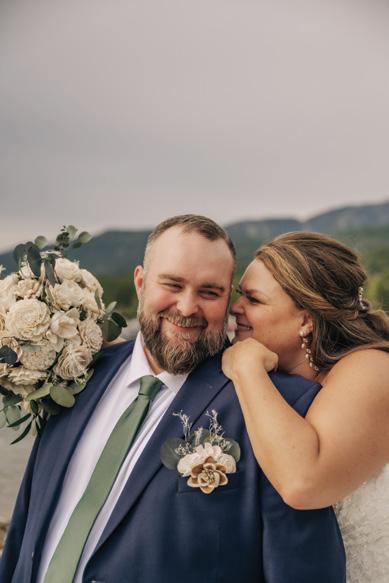
Tell us about you...
We live in New Haven, Michigan. It’s a small town about 40 minutes north of Detroit. Joe is originally from Algonac, Michigan and I am from Mt. Clemens, Michigan.
Joe is a machine builder for the auto industry. He also plays guitar and sings at a local bar/restaurant.
I am a Surgical Tech. I assist the surgeon during surgery.
Amy - What is the trait that you most admire in Joe?
Joe is hands down the kindest, most caring person I have ever met. He always thinks of others first.
Joe – When did you realize you wanted to get married to Amy? On our first date. I knew she was too good for me but I went for it anyways.
What
did you enjoy most during your wedding day?
I can’t choose just one. Seeing Joe at the end of the aisle was one of the best feelings. I couldn’t stop smiling. Having our closest family there with us and just having the best time with them.
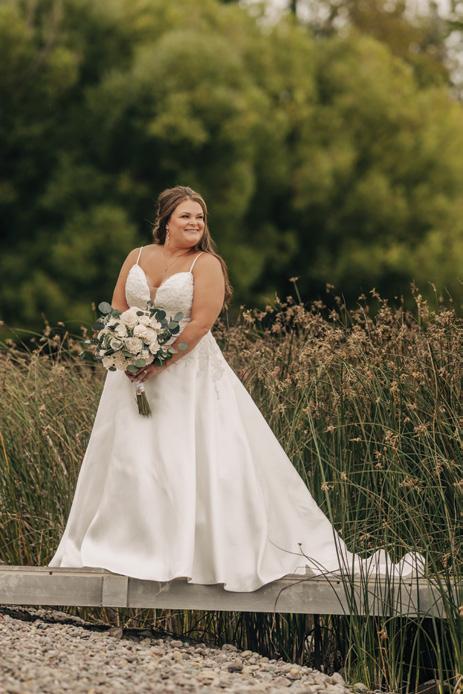
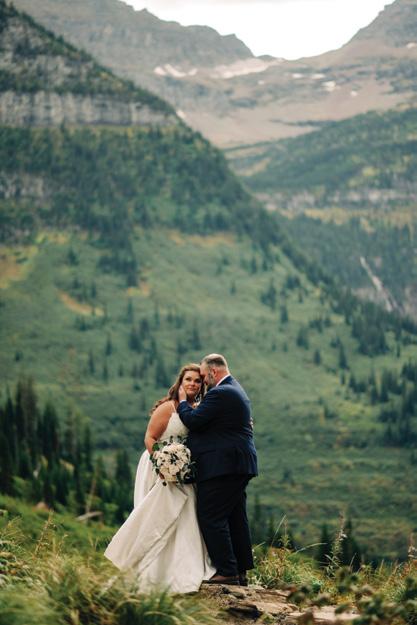

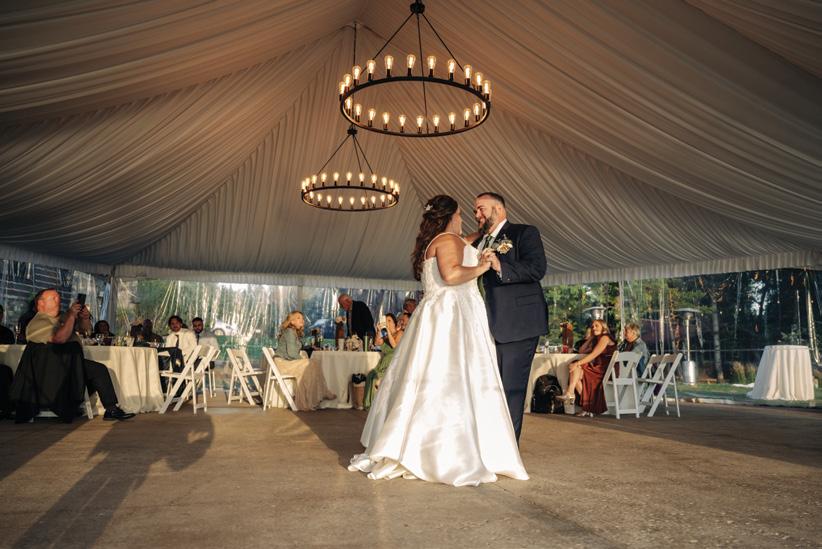

Why did you choose the venue where you got married?
We went to the pool there one day during a vacation and fell in love. There was a wedding there that day and we joked that it would be amazing to have our wedding there. A few years later, when we finally decided we did want to go away for our wedding it was our first pick! We both love being on the water and being in the mountains so it was the best of both worlds
Amy – What did you enjoy most during your wedding day?
I can’t choose just one. Seeing Joe at the end of the aisle was one of the best feelings. I couldn’t stop smiling. Having our closest family there with us and just having the best time with them. Finally, when Joe sang my favorite song that he wrote at the reception! I was hoping he would sing at some point but he kept saying he wasn’t going to. I was so surprised when he did!
We can’t say enough good things about our photographer, Kelly Kirksey Photography, and our DJ, Yo DJ. Kelly and Gavin were professional, fun and incredibly helpful the entire time we were with them. They went above and beyond.
Joe is hands down the kindest, most caring person I have ever met. He always thinks of others first.
Sheldon from Yo DJ was a riot. He had everyone dancing all night long. Our dance floor was never empty!
Joe – What is your favorite activity to do as a couple? We like spending time with our friends and family.

venue & Caterer The Lodge at Whitefish Lake Music yo dJ dress maggie Sottero
tuxes/suits men’s warehouse rings
lawrence Jewelers (amy’s) rings by lux -etsy (Joe’s)
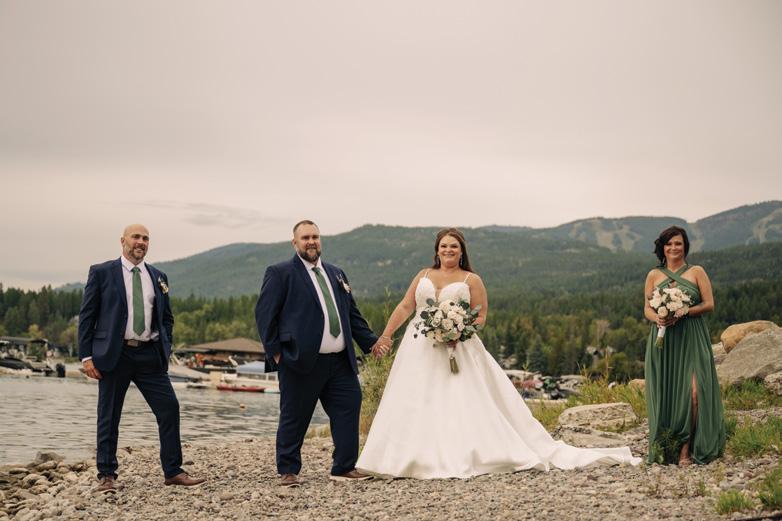
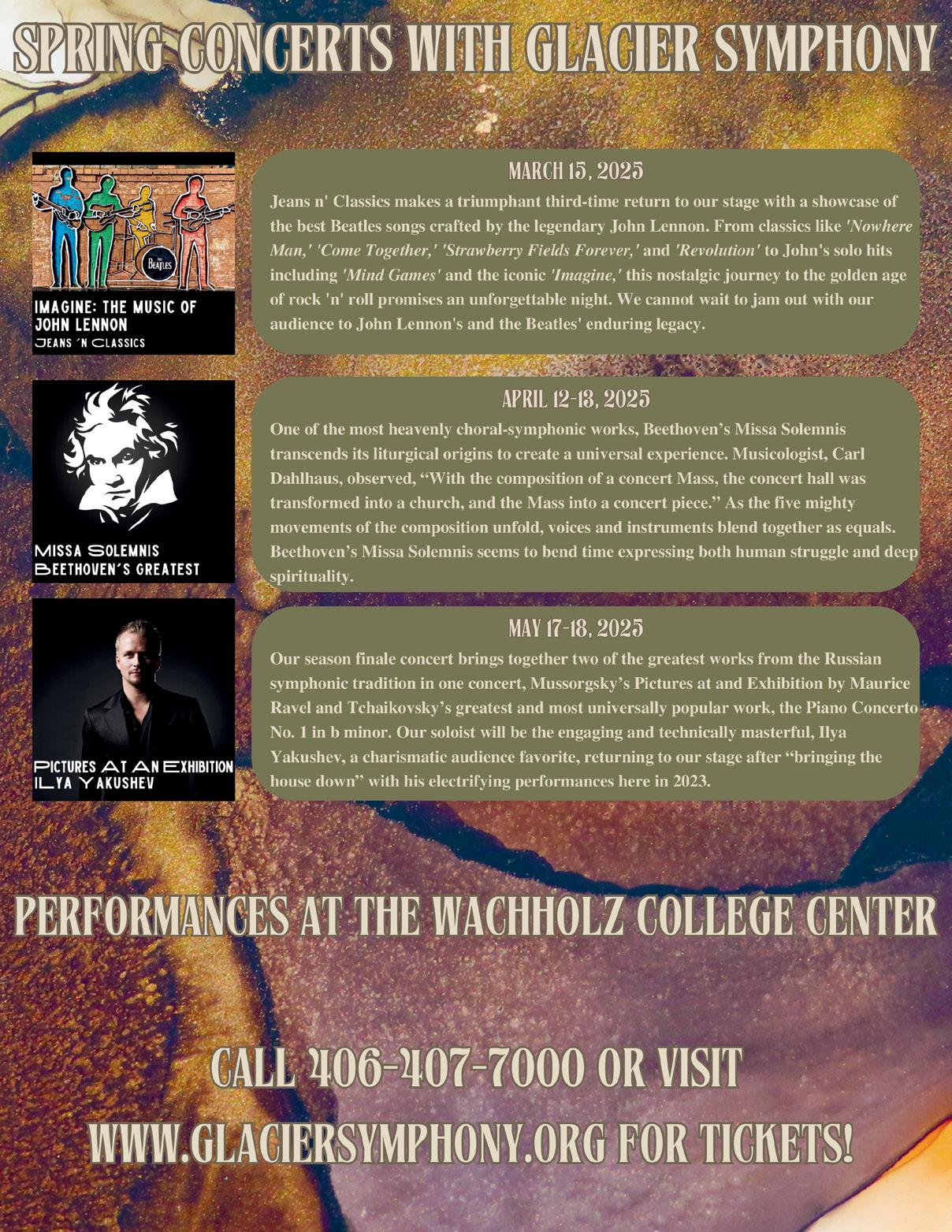
October 19,
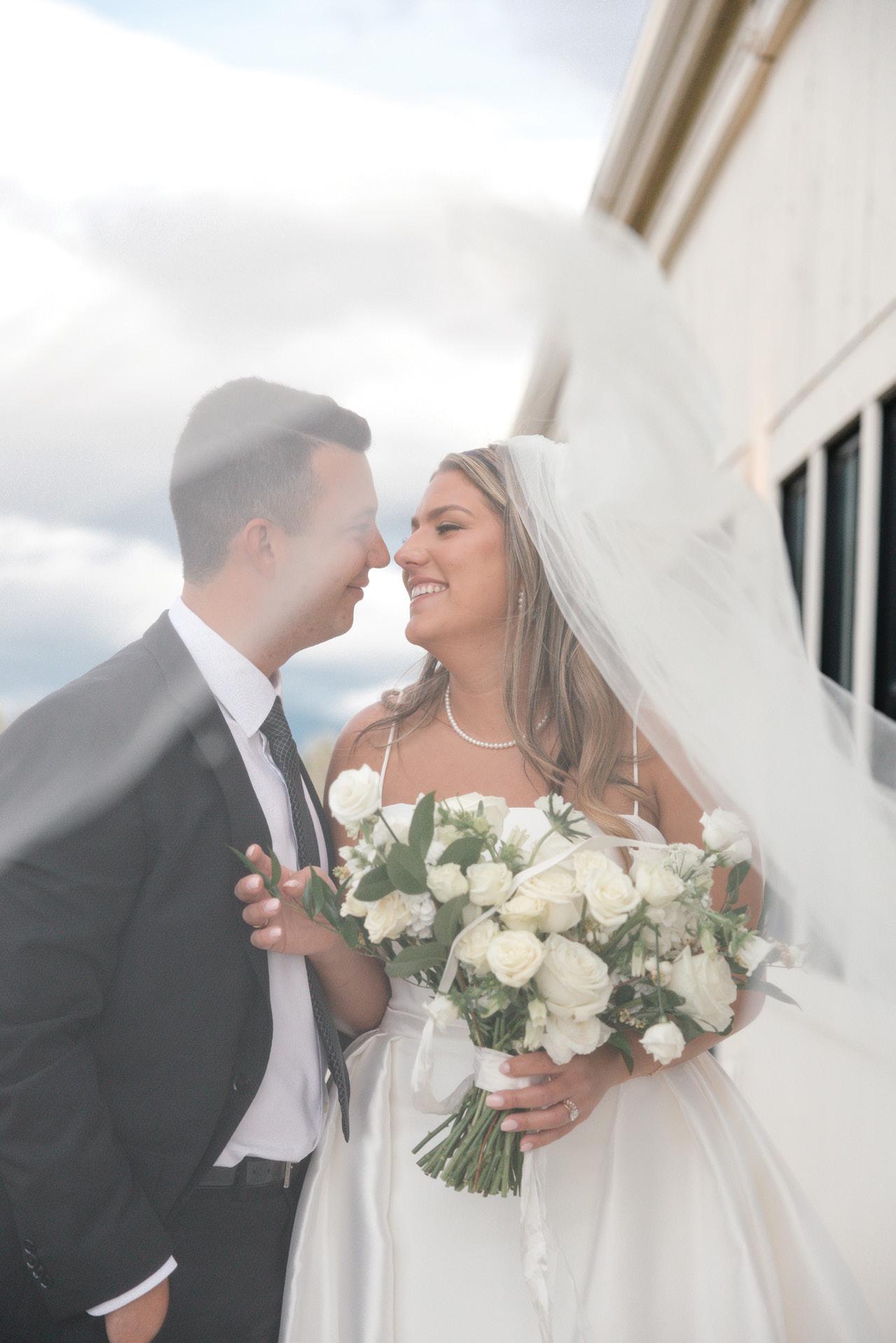
-
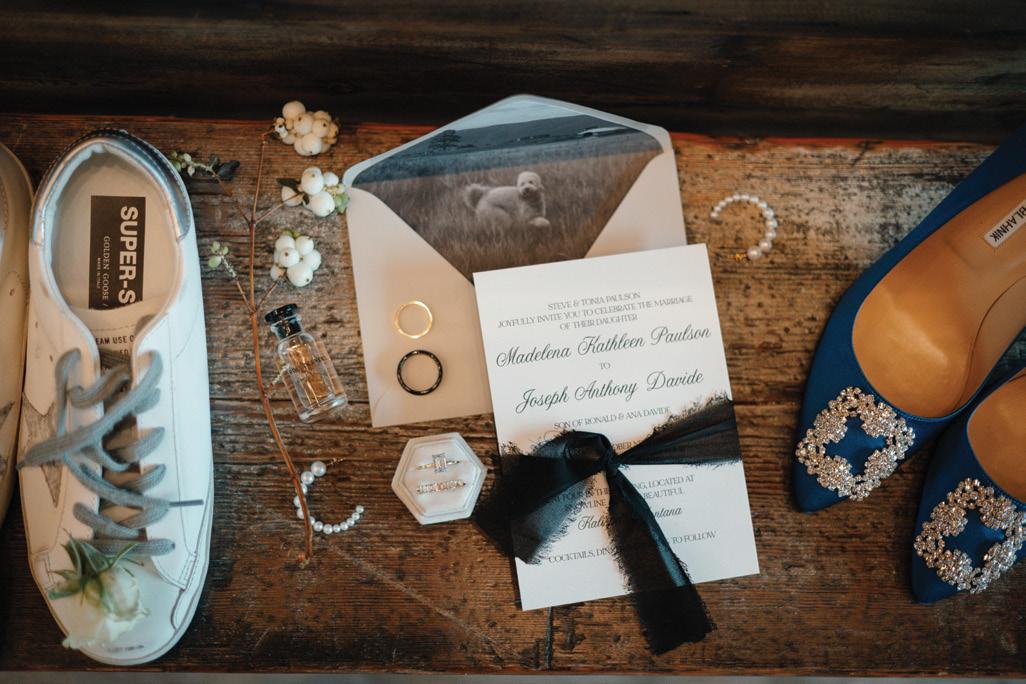
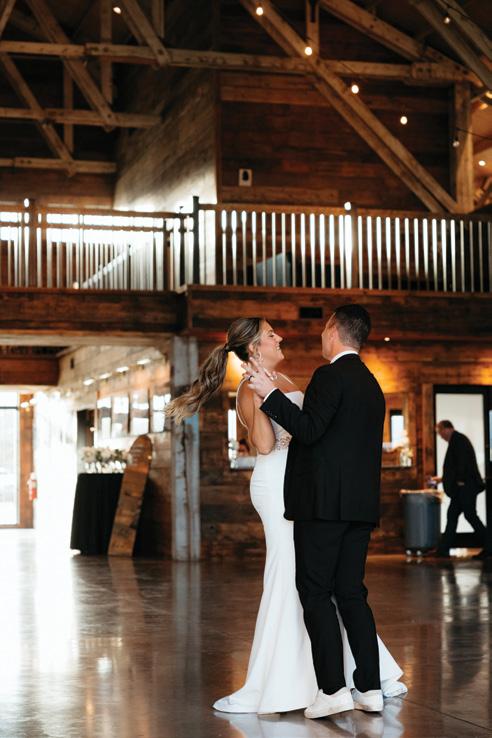
Tell us about you…
Maddi is a proud Kalispell, MT native. She lives and works in the Flathead Valley and loves this community. She works at WEthink Home Loans as a home loan advisor.
Joe is from Long Island, NY and has loved being in Montana (although it was a transition at first). Joe is a Financial Planner with Prudential Financial.
What did you enjoy most
during your
wedding day? Absolutely everything, it was the best day of my life. I got to marry my best friend.
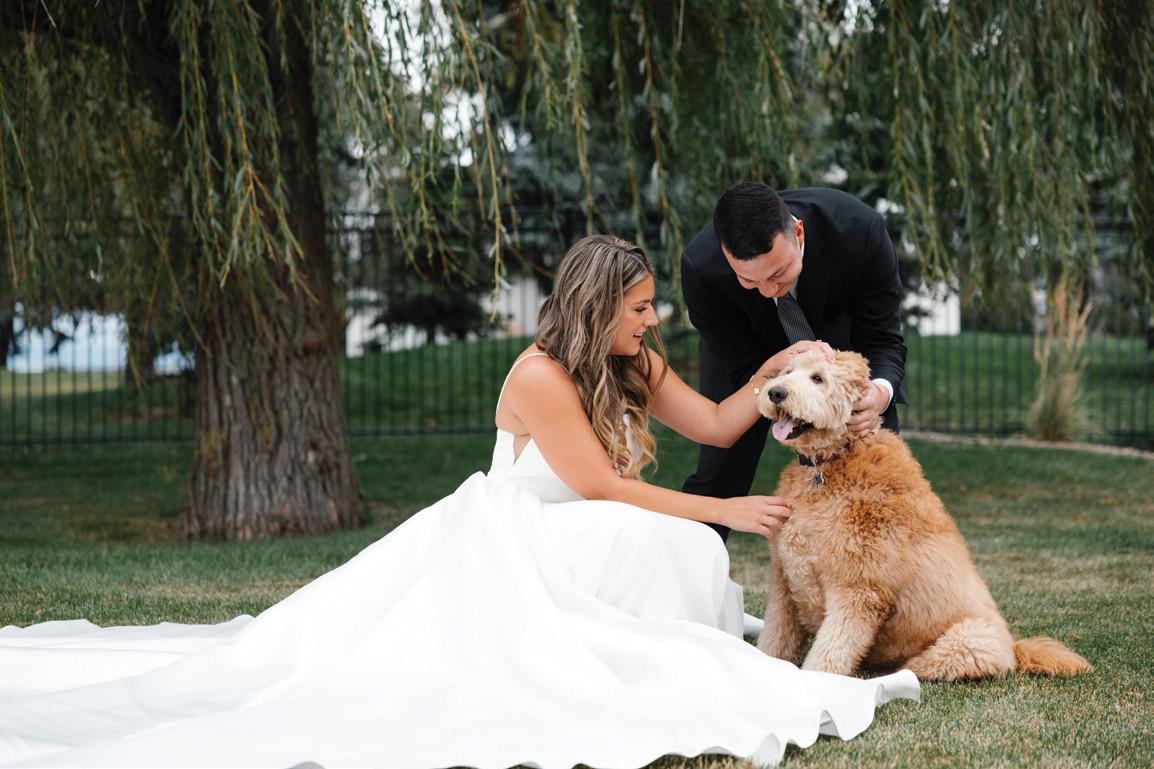

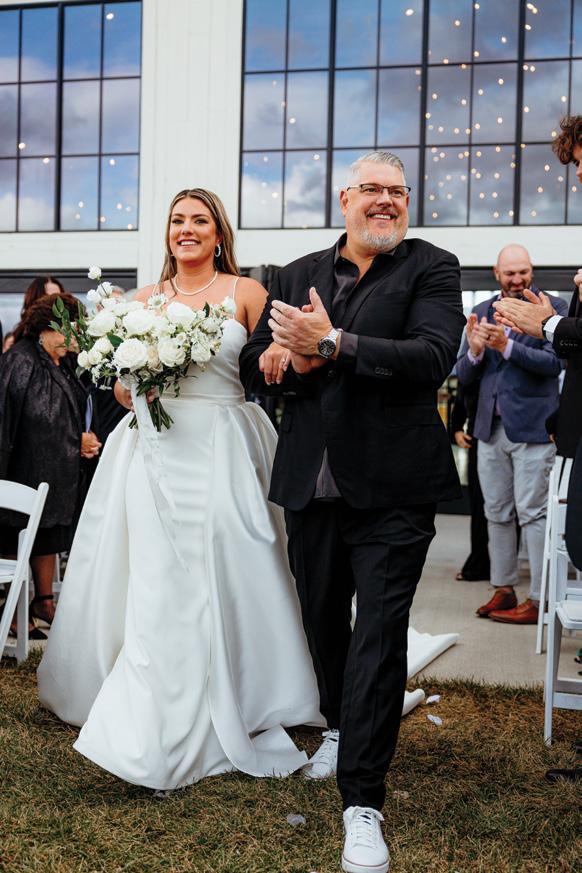
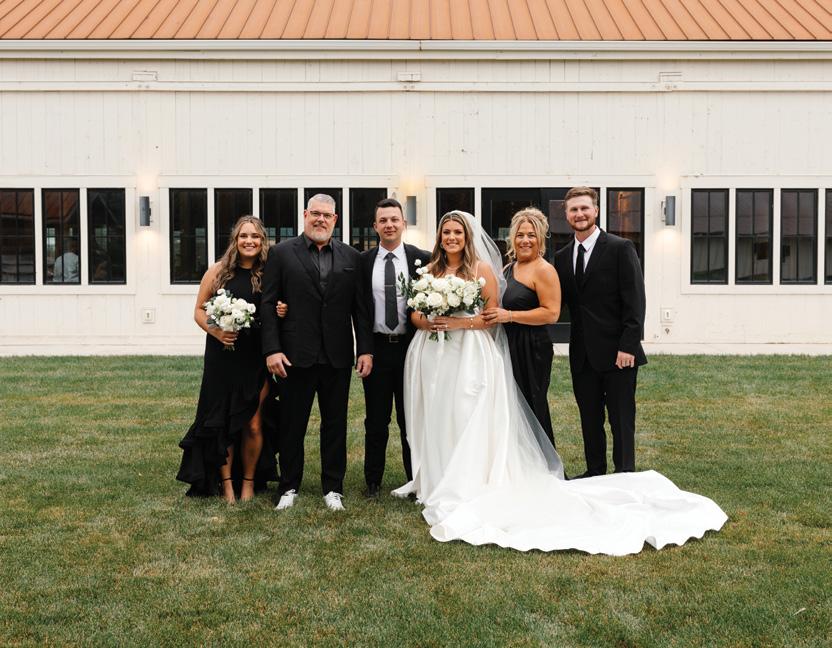
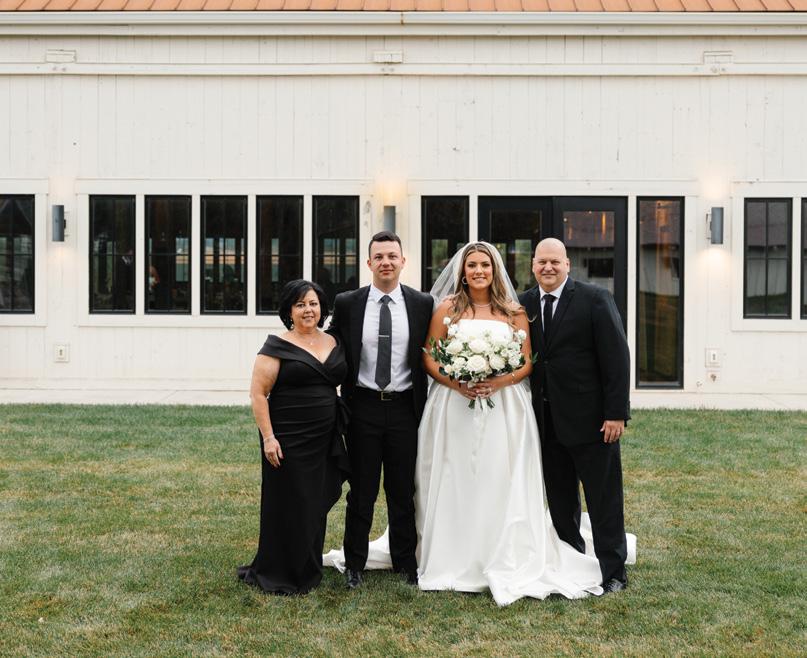
We both come from large families and it was extremely important for us to find a venue that could hold all our friends & family on our big day.
Maddi – What is the trait that you most admire in Joe?
My most admired traits of Joe are his work ethic and his ability to remain levelheaded in any situation.
Joe – When did you realize you wanted to get married to Maddi?
When I moved out of New York to come with her to Montana.
Why did you choose the venue where you got married?
We both come from large families and it was extremely important for us to find a venue that could hold all our friends & family on our big day. Snowline is an absolutely stunning
venue and it was the perfect spot for our special day.
Maddi – What did you enjoy most during your wedding day?
Absolutely everything, it was the best day of my life. I got to marry my best friend in front of all our favorite people and then got to celebrate the whole night away. I went into the day with no expectation for anything (my mom & sister really took control of the vision lol), so I got to sit back and just enjoy everything.
Joe – What is your favorite activity to do as a couple?
Go camping together with our puppy or spending the day skiing together.
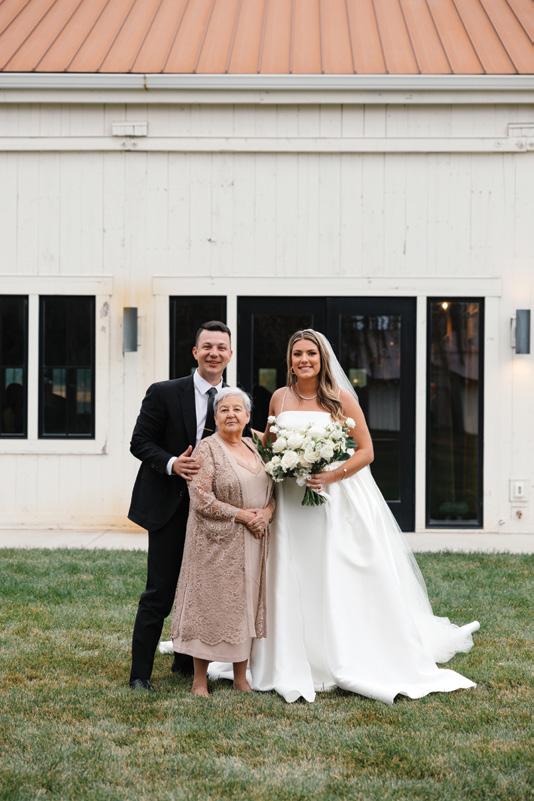
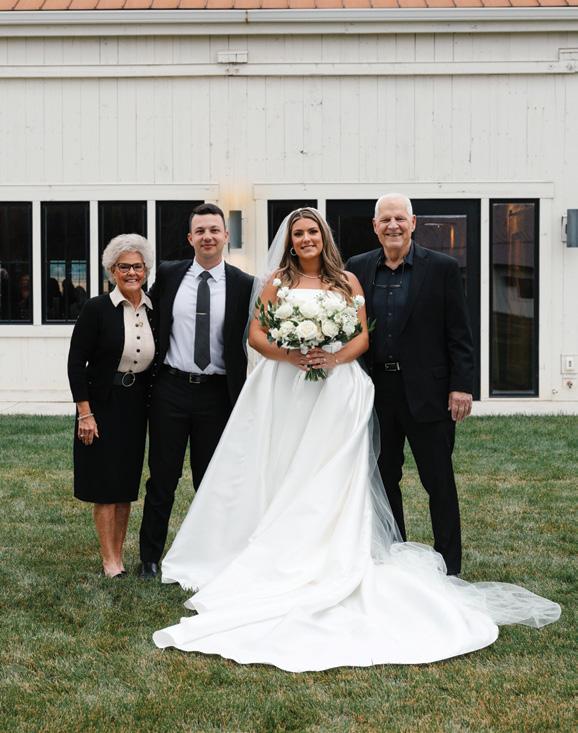

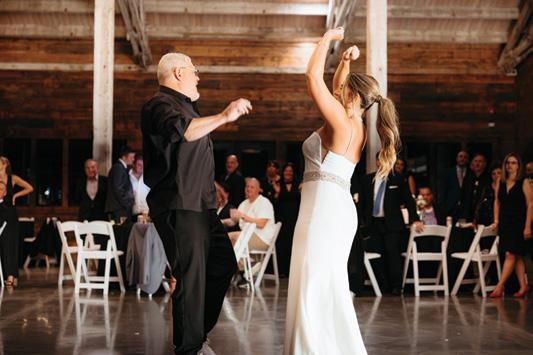
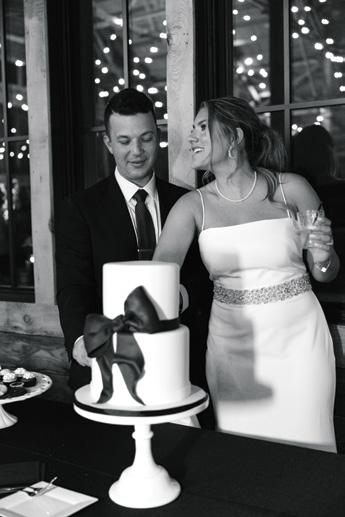
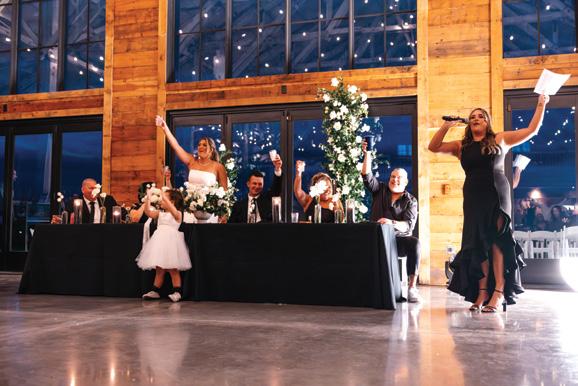
venue
Snowline acres
rentals
empress events
Coordinator
Capella at empress events - i Can not say enough amazing things about her, she made the day come to life!
Caterer kopper kitchen
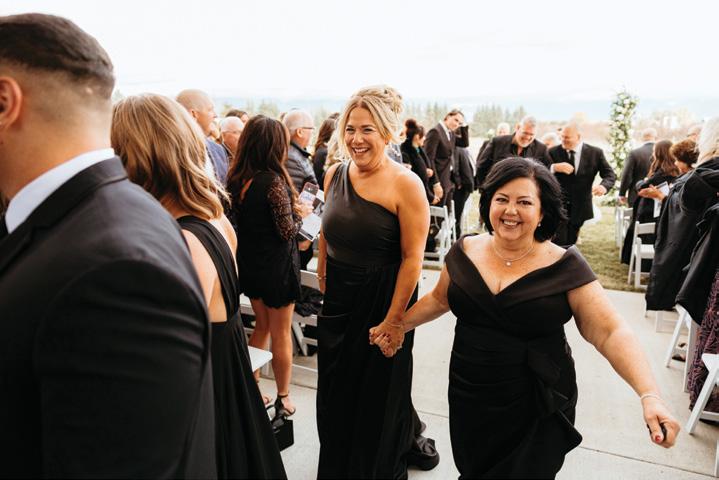
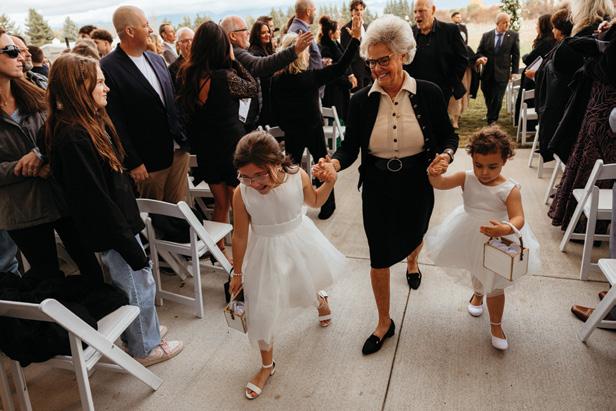
Cake/dessert
miss patti Cakes
Music
Sidecar audio
Content keep Candid
rings
ring Concierge florals
Forage & Floral
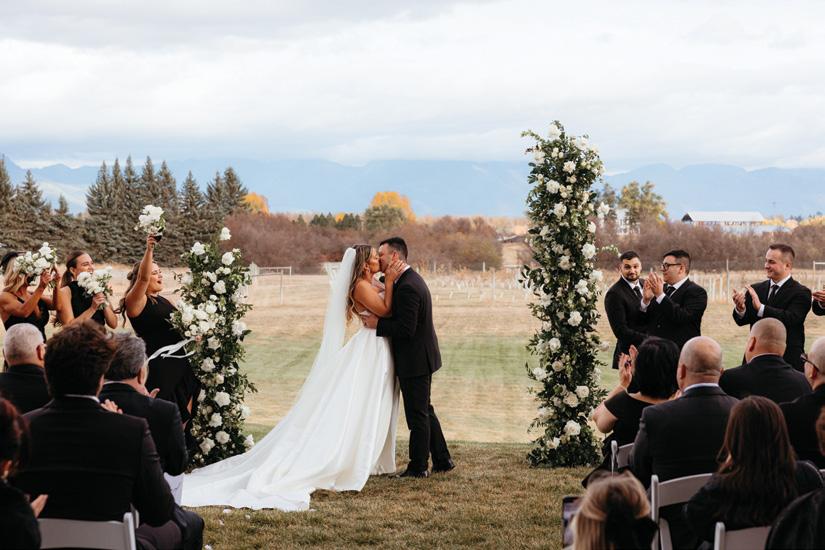








Alliance Unrelenting Power


Power In Stillness
10 AM TO 6 PM MONDAY THROUGH S ATURDAY - C LOSED S UNDAYS






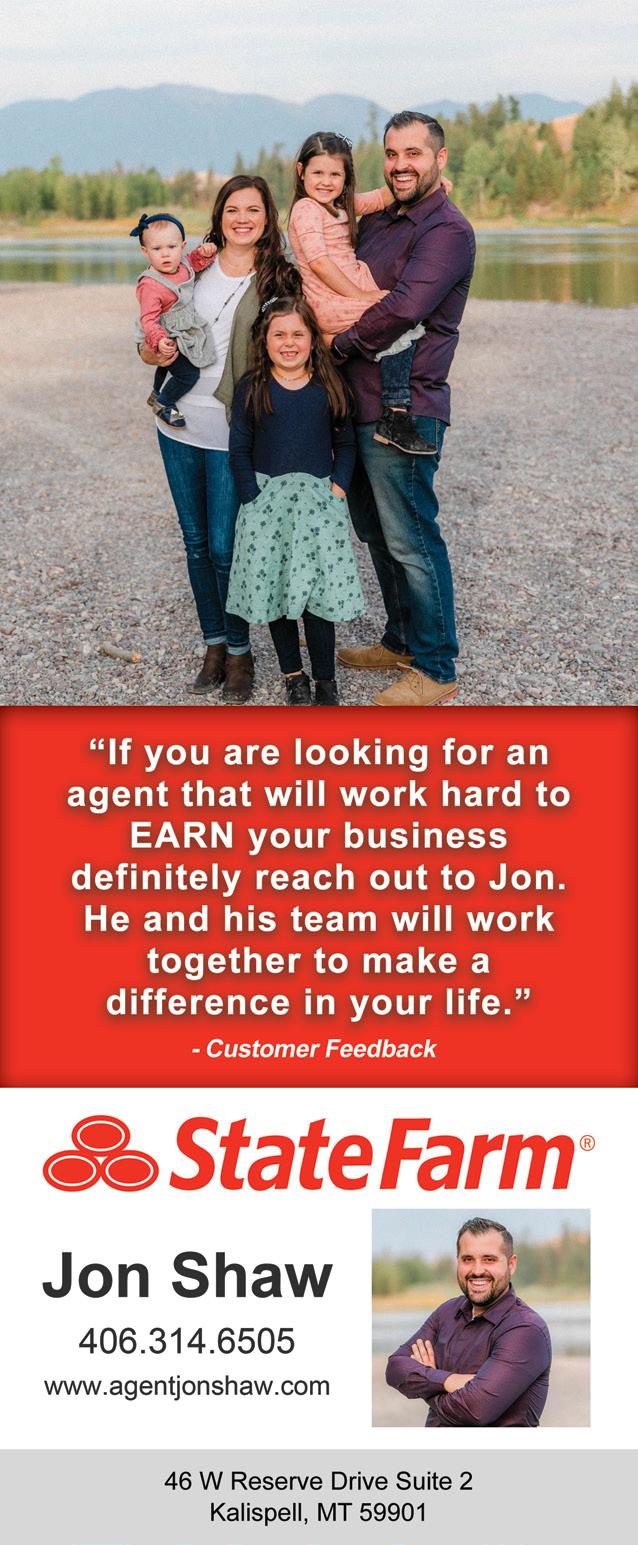





By Rachael Seymour
In this day and age, it’s easy to get lost. Maybe not in the wilderness so much, but among each other. In this time of the internet and social media, it’s easy to follow little trails of distraction this way and that, following bright colors, sounds and any quick facts leading you further down rabbit holes on your own. Suddenly you look up and you don’t recognize anything, or anyone, anymore. It can be easy to lose your sense of community and curiosity if you’re not careful. And if you’re young, sometimes it’s diminished before it even starts.
But in a little corner of the woods, close to Whitefish, there's a small world where wonder flourishes like flowers and community is cultivated like crops.
There's a small group of buildings sitting between the tamaracks. Three large buildings sit with one road connecting each other before it winds its way out towards the main one. Even though it’s nearby, it’s quiet. The sun shines through the lean, spaced pines and the wind blows gently. Of course, you don’t get to sit in silence for too long. More than likely you’ll hear them before you see them: Groups of children running about or herded by an adult, weaving about the trees. Their shrieks of laughter and their lively conversations fill the air. Sledding hills and little structures dot the landscape. It looks like a fun summer camp caught in the winter. But really it’s a place to learn problem-solving skills, to foster
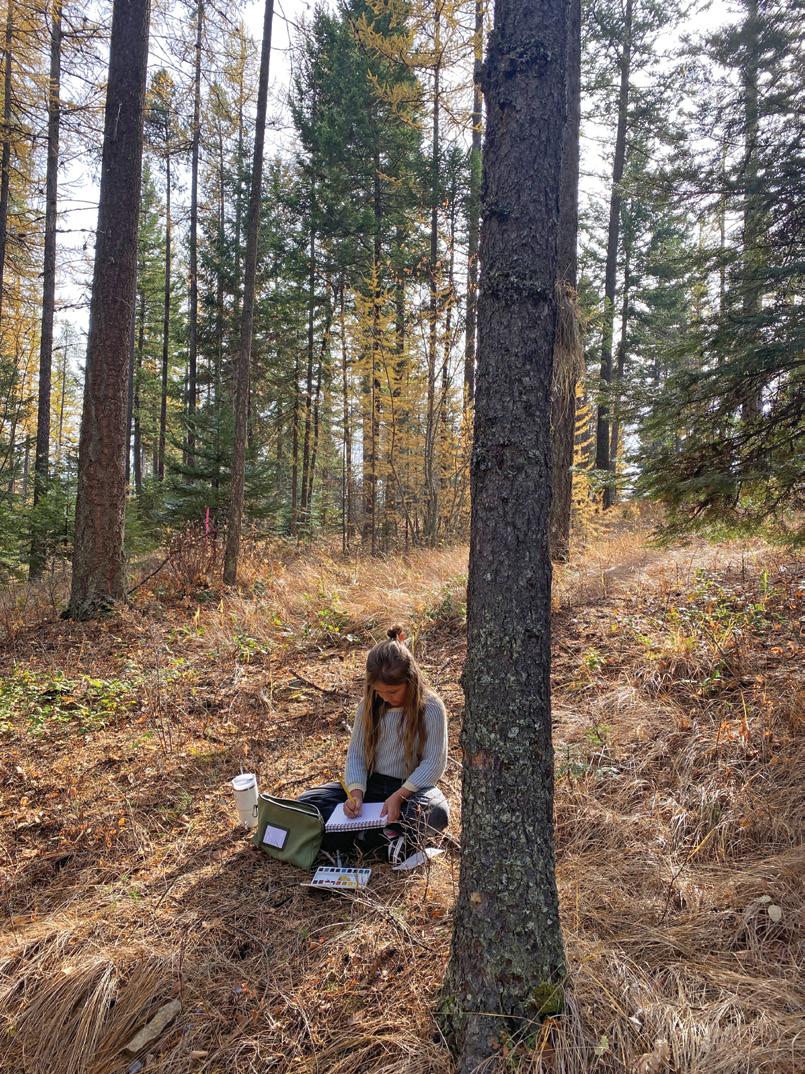
curiosity and to build a healthy community. All while also learning all the traditional subjects like math, reading, and science.
This is The Skola, an independent, innovative preschool and elementary school. Where, instead of learning solely in a classroom with an occasional outing in recess or field trip, vast chunks of the children’s schedule are spent outside, learning through play and experience.
It’s where Brooke Ober, the director and co-founder, also works.
The concept for The Skola, started out from a nature-based forest preschool called Foxtail Forskola where Brooke’s kids attended. At the time, she had been practicing speech pathology and cognitive rehab for two decades. She had always been fascinated with
how the brain works, and the cognitive rehabilitation process. As she continued to work with children with cognitive dysfunction, she became curious as to how her patients had social and executive function struggles.
“I remember thinking, ‘wow these kids are so bright; so why are these social nuances or task execution so hard for them?’” This led into a deep dive of research, leading her to discover how closely connected socialemotional learning and executive function were, and wanted to work to bring them together for learning. She also discovered the need for this deep learning in today’s world of fast pace and technology.
She was helping incorporate some of these ideas into Foxtail’s teaching as was a coworker and friend, fellow speech-language pathologist and literacy specialist Patty
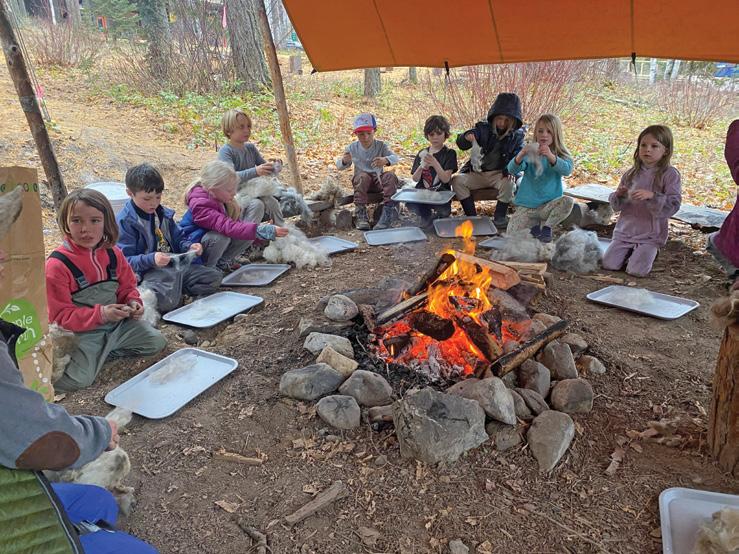
“I remember thinking, ‘wow these kids are so bright; so why are these social nuances or task execution so hard for them?’” This led into a deep dive of research, leading her to discover how closely connected social-emotional learning and executive function were.
Johnson. One day in 2022, they decided to put their heads together and brainstorm with fellow founders Brittany Crest and Foxtail’s founder Kayla Nickells on growing the school’s potential. They concluded to expand beyond preschool and restructure the curriculum to align with older grade school requirements. With the Foxtail’s founders moving overseas, it was a perfect time to merge the programs into a place where students could start learning these principles at age 3 and continue into the older grades. And thus, The Skola was born.
While The Skola is relatively new to Whitefish, its principles have been around for decades. One of its core beliefs is to use learning models called project and play-based learning. Based on the Scandinavian Educational Approach, it focuses on using hands-on, nature-based activities and projects to help educate its learners. While traditional classes take place in a building with structured lessons, much of the Skola’s classes are spent outside no matter the weather. It weaves nature and community into parts of their education, making sure that anything learned outside can be applied to what they learn in books. Inquiry-based learning, curiosity, and purpose-driven learning are also foundational to the model.
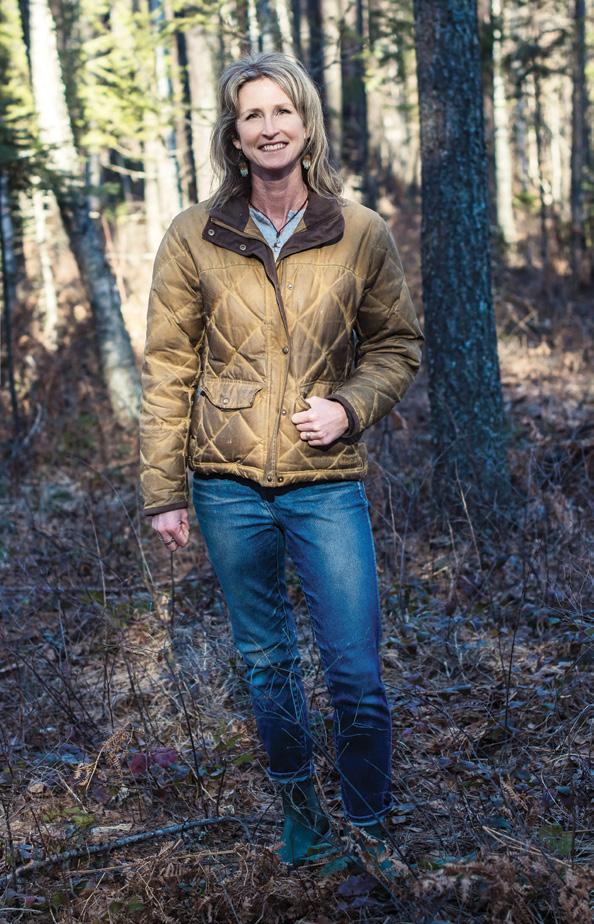
“How can you make this (lesson) authentic so that students know there’s a purpose behind it?” Brooke asks. It’s a question at the heart of the staff’s mission; one they try to answer every day with their teachings. “Once they know there’s a purpose behind what they’re doing, that their voice makes a difference and they know that their critical thinking makes a difference, they can make a difference in their community.”
Brooke mentions how every 4-6 weeks (but every week for the preschoolers), the directors and teachers choose a theme to focus on and how it connects to themselves and others around them. An example was asking a driving question regarding fire and how it’s helpful and harmful. They dug deep on that theme by talking to experts in the community. They had the students create a teaching manual, then presented it and their fire skills to those same experts to show what they learned.
For example, right now, the older children are learning about “belonging” while using the book “The Wild Robot” as an inspiration. Asking the children “What does it mean to belong?” And “How do we learn to build meaningful relationships with nature and people around us?"
In this time when communal support is more important than ever, Brooke, the teachers, and the board, are adamant on making sure that the children are aware and become united within the surrounding community. Often that includes bringing in members of town to talk to the classes about their roles, sometimes even having the older kids go into Whitefish and help with small tasks such as helping clear snow from the local business fronts. They want to create a movement for our area to show that students can come into different businesses and be helpful and supportive and learn from them. They can support each other, learn from each other and have more of an open, tangible system in between them.


Brooke and her faculty also strive to make sure that all students are welcome at the school. With 23% of their students having received financial aid, The Skola staff is determined to make sure this school is as inclusive as possible. They recognize everyone has their own story and background, and that learning isn’t a box one needs to fit into. They work to make sure the teaching is individualized for students, to maintain their internal motivation for learning. They work to bring parents into the conversation and feel like they’re a part of the education such as sending out photos of the kids, lots of communication, even bringing some in to teach about their occupation and how it affects the surrounding environment, whether that’s being a chef or a banker.

As the saying goes, it takes a village to raise a child. We need to rely on each other to make sure our environment and future don’t fall by the wayside.
While The Skola is focused on staying relatively small and personal with low student to teacher ratios, that doesn’t mean they want to stay sequestered in the woods of Whitefish. They’re hoping to work with more public and private schools in the future and to integrate more play and nature-based programs and to help bring their models into traditional education. And while the class ages only go as high as fourth grade currently, they’re planning to ultimately go through eighth grade. In the meantime, they have summer programs taking place this year that are open to children inside and outside The Skola system. The programs will be a lot more relaxed and focused on different outdoor subjects the teachers are passionate about, such as shelter building and nature journaling. It’s incredibly fortunate we live in a place where we can learn that just a few steps outside our town!
As the saying goes, it takes a village to raise a child. We need to rely on each other to make sure our environment and future don’t fall by the wayside. As a non-profit, Brooke and The Skola recognize this and are deeply grateful for all the donations and contributions folks have chipped in in the past few years. Whether that’s volunteering to have students come help work at a farm and learn about animals, or by donating a brand-new bus to help them all get there in the first place. It’s all in the name of putting our best foot forward to make sure these children will be ready to boldly step out on their own into the great unknown. And if they ever get lost, they can be sure that someone will be there to help find their way back.
www.theskola.org
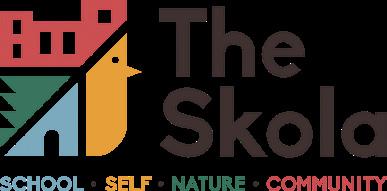


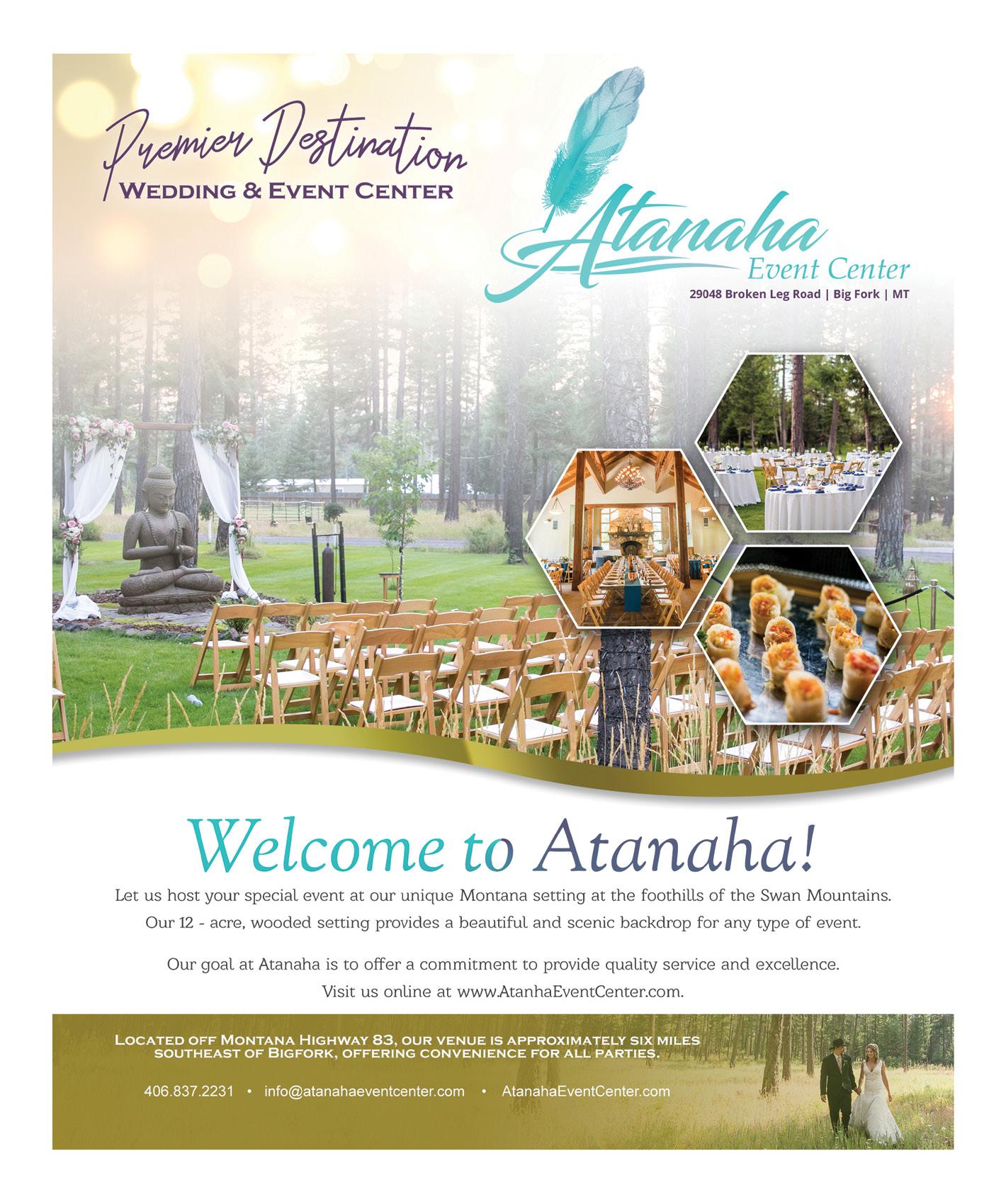
Written by Amanda Wilson
How would it feel to step into your most confident self? Dr. Scott Jahnke, renowned for his expertise in rehabilitation and uniquely trained in Family Practice with OB/GYN, has opened De Novo Wellness in Kalispell, Montana. This functional wellness clinic offers women a range of advanced treatments for beauty and well-being. With a foundation built on years of expertise in physical medicine, musculoskeletal care, and pain management through his established practice, Grizzly Spine and Rehab, Dr. Jahnke's latest venture, De Novo Wellness, is a natural evolution, blending medical precision with comprehensive wellness.
Dr. Jahnke's journey began with a deep understanding of the human body's intricate mechanics. As a board-certified specialist in Physical Medicine and Rehabilitation, with subspecialty board certification in Pain Medicine, and extensive training in Family Practice and OB/GYN, he dedicated himself to alleviating suffering and restoring function at Grizzly Spine and Rehab. His experience treating patients with musculoskeletal injuries, chronic pain, and functional limitations revealed a profound connection between physical well-being and overall quality of life.
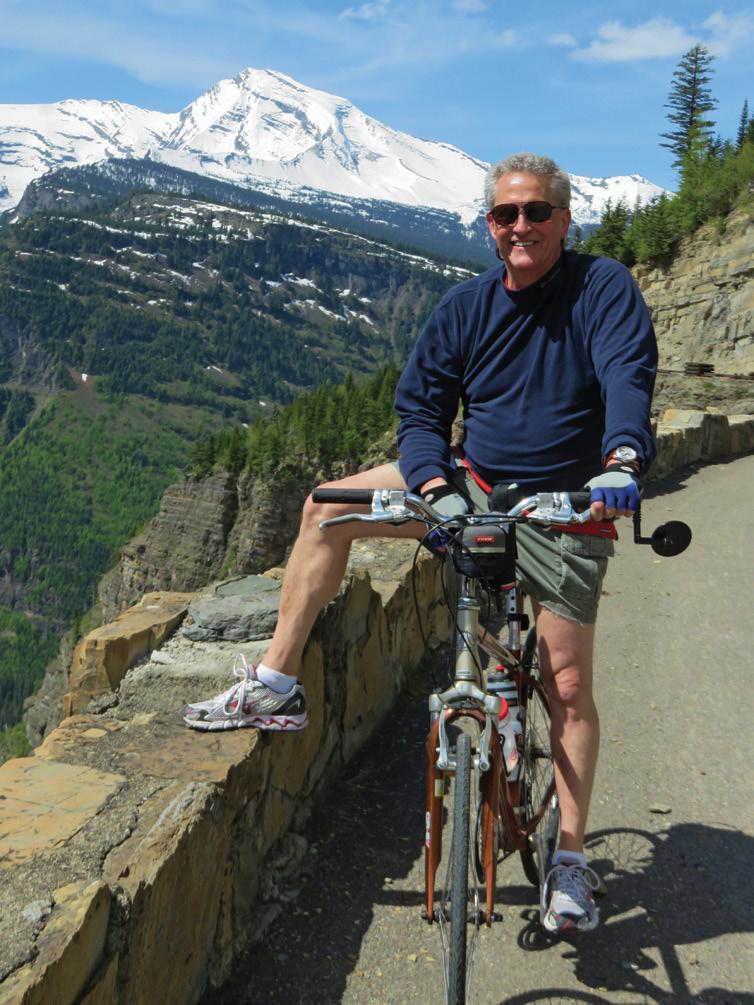
"At Grizzly Spine and Rehab, I witnessed firsthand how pain and physical limitations can impact a person's confidence and sense of self," Dr. Jahnke reflects. "I realized that true wellness encompasses not only physical health but also emotional and aesthetic well-being. De Novo Wellness is the culmination of this understanding, offering a complete approach to rejuvenation."
De Novo Wellness, meaning "a new beginning," embodies Dr. Jahnke's vision of empowering individuals to achieve optimal physical and mental health. This functional wellness clinic offers a diverse range of cutting-edge treatments, including certified regenerative medicine with PRP, Stem cells, and Exosomes for musculoskeletal and aesthetic issues, functional wellness programs, and advanced aesthetic procedures.
Dr. Jahnke's expertise in musculoskeletal care is evident in De Novo Wellness's innovative functional programs, particularly with Emsculpt Neo. This advanced technology, utilizing High-Intensity Focused Electromagnetic (HIFEM) energy, delivers exceptional results. For rehabilitation, Dr. Jahnke emphasizes its 'gamechanging' capabilities, citing studies that demonstrate a three-fold increase in muscle strength after just four 30-minute sessions. Patients report improved muscle size, strength, and range of motion, with many feeling less prone to re-injury. Furthermore, Emsculpt Neo's supramaximal contraction mode offers a powerful solution for muscle building and fat loss. By inducing intense muscle contractions and heating tissue, four sessions provide results equivalent to 16 weeks of high-
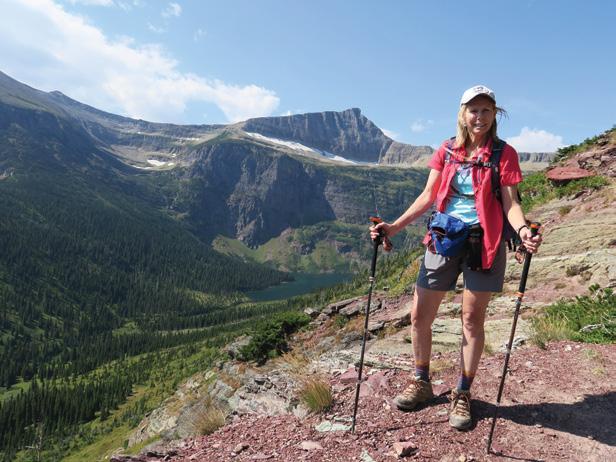

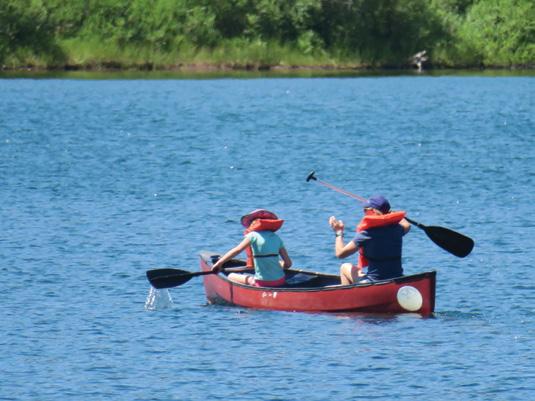
intensity interval training, achieving significant muscle gain and fat reduction.
But strength and confidence go beyond just muscle tone, which is why De Novo Wellness also focuses on often-overlooked areas like pelvic floor health. Incontinence, a common issue affecting both women and men, can significantly impact quality of life. The Emsella treatment, a painless procedure that delivers over 11,000 Kegel-like contractions in a single session, helps strengthen those muscles, addressing issues like urinary incontinence and improving sexual wellness for both men and women. "It's about giving people their confidence back," Dr. Jahnke says. "These are common issues, and we have effective solutions. We provide a comfortable space to discuss these issues openly."
For women looking to enhance their intimate wellness, Emfemme 360 uses radiofrequency to tighten and rejuvenate, helping you feel more comfortable and confident.

I realized that true wellness encompasses not only physical health but also emotional and aesthetic well-being. De Novo Wellness is the culmination of this understanding, offering a complete approach to rejuvenation.
De Novo Wellness empowers women to feel confident from head to toe, and that includes aesthetic rejuvenation. When it comes to your face, De Novo Wellness offers treatments that rejuvenate and refresh. The AgeJet Nitrogen Plasma Treatment is unique in its ability to address delicate areas above and below the eyes, effectively reversing signs of aging around the eyes. It can also perform non-surgical labiaplasties, providing a less invasive option for women. The AgeJet treatment helps smooth out wrinkles and tighten skin, giving you a youthful glow. And for a natural lift, EmFace uses a combination of radiofrequency and electrical stimulation to tone facial muscles and reduce wrinkles. "It's all about enhancing your natural beauty," Dr. Jahnke explains.
In addition to aesthetic treatments, De Novo Wellness offers nutrition and exercise programs, with medication assistance
when needed, to support overall wellness and help you achieve your health goals.
Dr. Jahnke's dedication to patient care extends beyond his medical expertise. He is an empathetic listener who strives to understand each patient's unique needs and goals.
De Novo Wellness represents a new chapter in Dr. Jahnke's career, a fusion of his medical expertise and passion for helping individuals achieve their full potential. With a focus on cuttingedge treatments, personalized care, and a holistic approach to wellness, De Novo Wellness is poised to become a leading destination for rejuvenation in Montana. Discover your new beginning at De Novo Wellness. Schedule your consultation today.
www.denovowellness.care


Outdoor views just got X-ponentially better.
With its modern and streamlined design, Trex Signature® Cable Rail adds a sense of sophisticated style to any outdoor space. Anchored by the innovative X-Series post, this specialty line of railings simplifies installation while delivering impeccably sight lines, lasting beauty and minimal maintenance. Discover how to see beyond your outdoor space like never before at





By Jessa Ash
Ensuring your children are set up for financial success is a crucial aspect of parenting. It's never too early to start planning for their future, and there are numerous financial tools available to help you pave the way. Some key options to consider are 529 plans, Minor Roth accounts, and other minor-type accounts. Let's dive deeper into each of these options to understand their benefits and how they can help secure your child's financial future.
Named after Section 529 of the Internal Revenue Code, these tax-advantaged savings plans are designed to encourage saving for future education costs. Contributions to 529 plans grow tax-deferred, and withdrawals are tax-free when used for qualified education expenses, such as tuition, books, and room & board. This makes 529 plans an excellent way to ensure your child has the financial resources needed for college or other educational pursuits.
• Tax Advantages: Contributions grow tax-deferred, and withdrawals for qualified education expenses are tax-free. This can result in significant savings over time.
• State Incentives: Many states, including Montana, offer tax deductions or credits for contributions to 529 plans, providing additional incentives for guardians.
• Flexibility: Funds in a 529 plan can be used for a wide range of educational expenses, including K-12 tuition, college expenses, and even certain apprenticeship programs.
• Transferability: If the beneficiary of the 529 plan decides not to pursue higher education, the account owner can change the beneficiary

to another eligible family member without tax penalties.
• State Tax Deduction: Montana offers a state tax deduction for contributions to a Montana or non-Montana 529 plan of up to $3,000 for single filers and $6,000 for married couples filing jointly.
• Tax-Free Withdrawals: Qualified withdrawals from a Montana 529 plan are free from both federal and state income taxes.
• Gift and Estate Tax Benefits: Contributions to a 529 plan can also provide gift and estate tax benefits, allowing you to make significant contributions without incurring federal gift-tax consequences.
While traditionally thought of as retirement accounts, Roth IRAs can also be an effective way to teach children about saving and investing from a young age. Unlike traditional IRAs, contributions to Roth IRAs are made with after-tax dollars, and qualified withdrawals in retirement are tax-free.
If your child has earned income, they can contribute to a Roth IRA, up to the annual limit.
• Long-Term Growth: Contributions to a Roth IRA have decades to grow tax-free, thanks to the power of compound interest.
• Tax-Free Withdrawals: Qualified withdrawals in retirement are tax-free, providing significant tax savings in the long run.
• Financial Education: Managing a Roth IRA teaches children about saving, investing, and the importance of long-term financial planning.
Things
1. Determine Eligibility: Your child must have earned income to contribute to a Roth IRA. This can include wages from a part-time job or selfemployment income.
2. Contribution Amounts: Contribute up to the annual limit, which is the lesser of your child's earned income or the current IRA contribution limit. Encourage your child to contribute a portion of their earnings to the account.
You don't need to be a parent to help set children up for financial success. Grandparents, aunts, uncles, godparents, and even family friends can make a significant impact on a child's financial future.
Beyond 529 plans and Roth IRAs, there are other investment accounts to consider. Uniform Transfers to Minors Act (UTMA) and Uniform Gifts to Minors Act (UGMA) accounts are custodial accounts that allow parents to manage assets for their children. These accounts can hold a variety of investments, including stocks, bonds, and mutual funds.
Benefits of UTMA and UGMA Accounts
• Financial Education: These accounts provide an opportunity to teach children about investing and financial responsibility.
• Variety of Investments: UTMA and UGMA accounts can hold a wide range of assets, offering more investment flexibility than 529 plans.
• Tax Benefits: Earnings in these accounts are subject to the child's tax rate, which is often lower than the parent's tax rate. However, the "kiddie tax" rules may apply to unearned income above a certain threshold.
Children Financially Without Being a Parent
You don't need to be a parent to help set children up for financial success. Grandparents, aunts, uncles, godparents, and even family friends can make a significant impact on a child's financial future. Here are some ways to contribute:
• Open a 529 Plan: Anyone can open and contribute to a 529 plan for a designated beneficiary. This allows you to save for a child's education and take advantage of the same tax benefits.
• Contribute to Custodial Accounts: You can contribute to a child's UTMA or UGMA account, helping them learn about saving and investing.
• Gift Stocks or Bonds: Consider gifting stocks or bonds to a child, teaching them about the value of investing and providing them with assets that can grow over time.
• Financial Education: Share your knowledge about money management, saving, and investing with the children in your life. Teaching financial literacy is one of the greatest gifts you can give.
Setting children up for financial success involves more than just saving and investing; it
also requires teaching them about financial literacy. Here are some tips to help your children become financially savvy:
• Start Early: Introduce basic financial concepts, such as saving, spending, and budgeting, at a young age.
• Lead by Example: Demonstrate good financial habits, such as budgeting, saving, and responsible spending.
• Use Real-Life Scenarios: Involve your children in everyday financial decisions, such as grocery shopping or planning a family budget.
• Encourage Saving: Help your children set savings goals and track their progress.
• Teach About Debt: Explain the importance of avoiding unnecessary debt and the impact of interest rates on borrowing.
Let Fischer Investment Strategies Guide You Fischer Investment Strategies is recognized for its personalized service and commitment to helping clients achieve their financial goals. They assist in choosing the most appropriate account type, whether it be a UTMA, UGMA, 529, or Roth account, based on your state's laws and your investment goals. Once you've decided on the type of account, they help you fund the account by contributing cash or transferring existing assets, and they will manage the investments until the child reaches the age of majority. Their fiduciary, fee-only services emphasize personalized service, taking the time to understand your unique financial situation and tailoring their advice to meet your specific needs. They offer comprehensive planning that ensures all aspects of your financial life are considered, and they prioritize their clients' best interests, working diligently to help them achieve their financial goals.
FIS will help you explore options like 529 plans, Roth IRAs, and custodial accounts, so you can provide a solid financial foundation that works for your financial situation and will benefit your children for years to come. Start early, educate them about money management, and watch as they grow into financially savvy adults. With the right tools and knowledge, you can set your children up for a lifetime of financial success.
Jessa Ash, Registered Investment Advisor Fischer Investment Strategies 406-212-1983 - jessa@fisfp.com

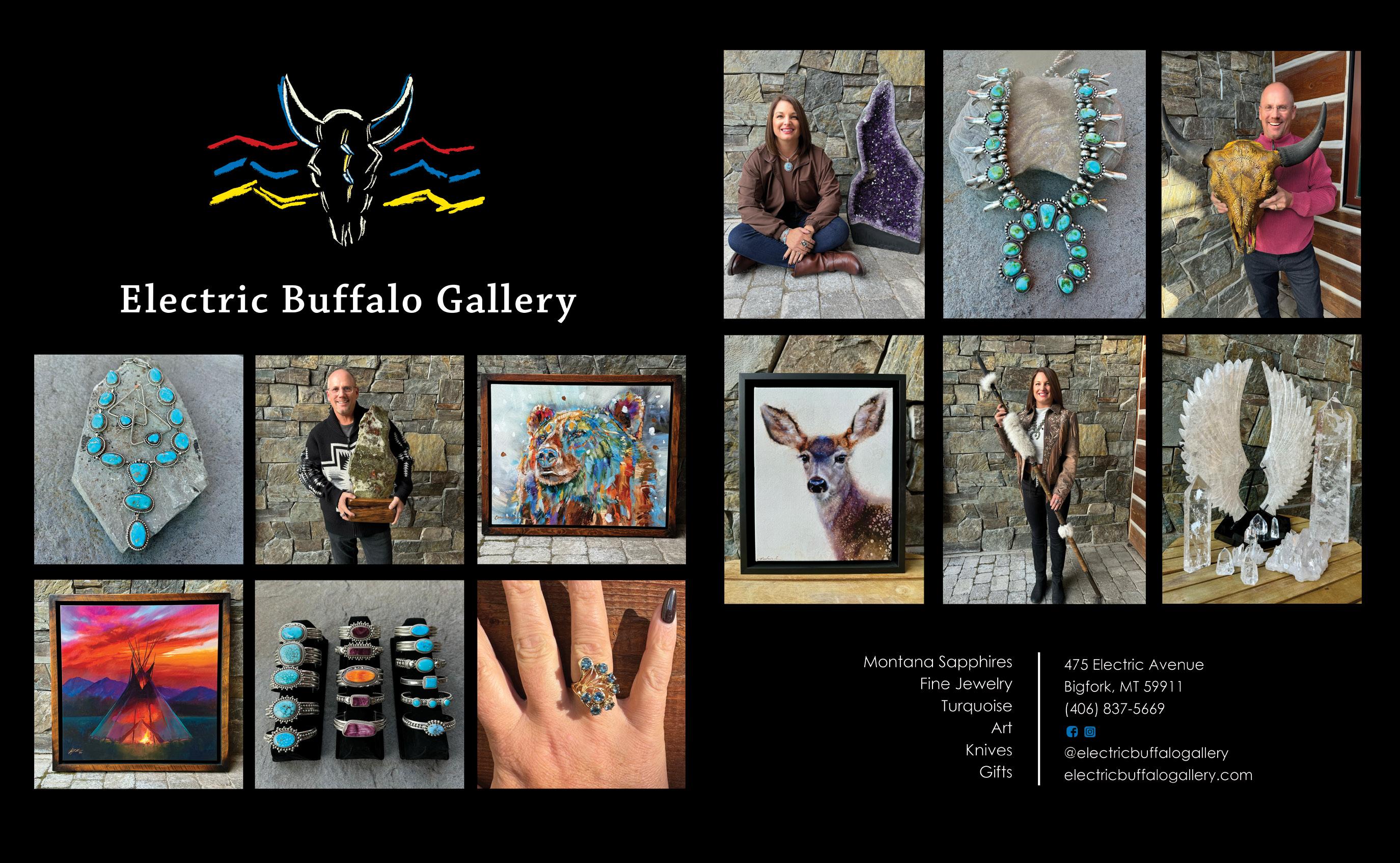
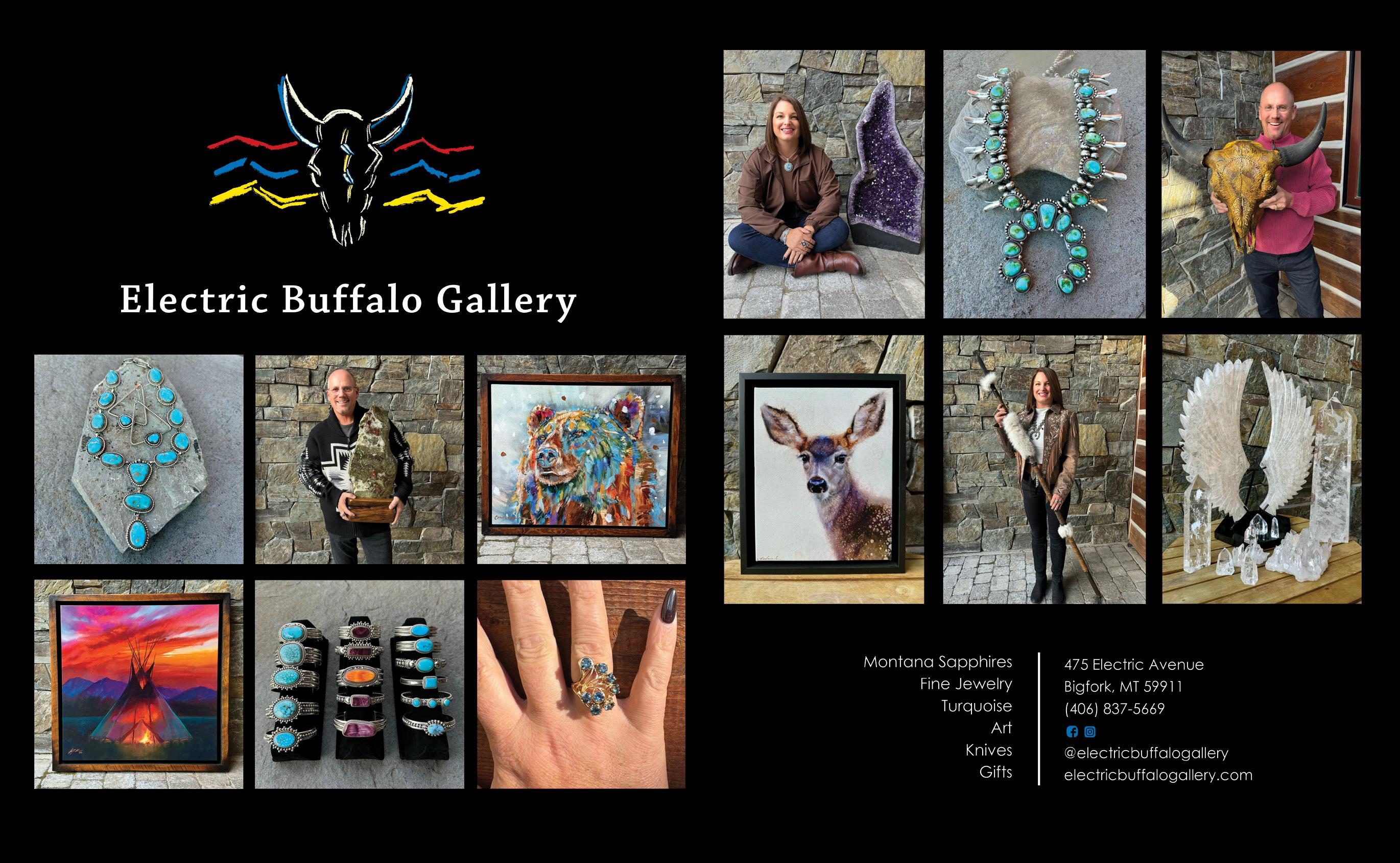

With just a month under her belt as the new Marketing and Events Manager for the Flathead Building Association, Ashleigh Lebron has literally hit the ground running. Even though the organization’s annual Home and Garden Show was less than a week away, Ashleigh graciously managed to carve out a little time for a visit.
‘With a background in hospitality, the ability to engage with FBA members and the public, and an attitude of service, Ashleigh was the perfect person to bring on board,” said Mark Freidline, FBA Executive Director.
Ashleigh’s undaunted enthusiasm for the Home & Garden Show was evident. “I can only thank Mark and all the preliminary teamwork of our incredible board and committee members that makes it possible for
Written by Mary Wallace
Design
someone like me to hop on board and seamlessly coordinate an event like this where needed,” she said.
Her previous experience in the hospitality industry has already proven beneficial. Armed with a map of exhibitor booths, Ashleigh was prepared to navigate the intricacies of the move-in schedules for the over 100 Home & Garden Show exhibitor booths starting mid-week. “This group is amazing,” said Ashleigh, “truly a bunch of great people! Everyone is willing to share their knowledge and lend a hand. I love working here so far!”
Ashleigh comes from a military family. They moved a lot as she grew up, and she feels that is how she learned to make fast connections. She has lived in places all over the U.S. and in Puerto Rico. She met her husband, Richard, while she lived in San Diego. Being an owner of Big Cedar Construction Group, he is a proud member of the FBA, too. They have two boys, Jacob, age
10, and Jack, age 3. Two German Shepherds complete their family.
Besides her work and family activities, Ashleigh belongs to Kalispell Noon Rotary and will soon serve on the board of the Club. She likes to do almost anything outdoorshiking, snowboarding, camping, and playing on the lake. She rides dressage, and she is excited to participate in her first powerlifting competition in May.
“The path to get here just unfolded in front of me,” Ashleigh says. Her heart is singing these days because she loves living here, watching her family succeed in each of their endeavors, and she is enjoying every minute of the road ahead. Before joining the team at FBA, Ashleigh worked at the Kalispell Chamber and for Code Girls United. “I really enjoy serving my community,” she said. “My cup is full!”
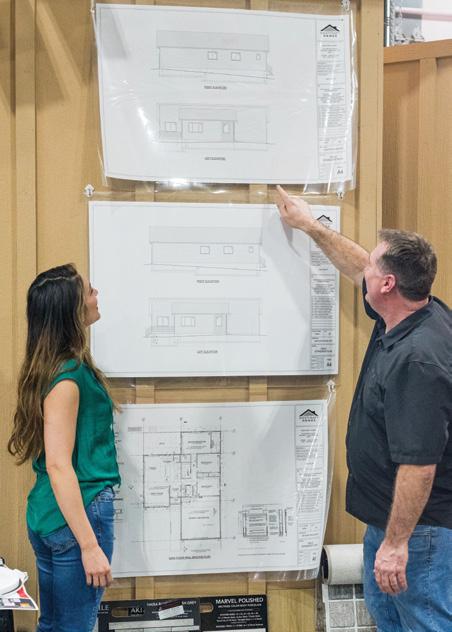
Flathead Building Association serves Flathead, Sanders, Lincoln, and Lake counties. According to Mark, there are five pillars that support the mission of the organization: to promote professionalism, credibility, quality, and vitality in the building industry to the benefit of its members and citizens of Northwest Montana. These five pillars are:
1. Advocacy - The FBA works closely with legislative committees on a state level to ensure reasonable regulations for contractor licensure.
2. Education - Contractor, subcontractor, and construction employee trainings are offered every other month to increase the professional standards of FBA members.
3. Safety Training - Safety has always been a focus - members can take advantage of their monthly GRIP safety trainings and job-site trainings including mock assessments are offered regularly.
4. Networking and community events - FBA members enjoy opportunities to network with each other and make and receive recommendations between industry professionals. A member business hosts each monthly Raise-the-Roof event, along with other community events. Under the FBA umbrella, there is also a fledgling Professional Women In Building Group, along with a pilot program group focusing on Young Professionals (1 of only 14 nationwide).
5. Philanthropy - The FBA hosts a summer golf fundraiser each year for their scholarship fund for eligible candidates who are planning to pursue an education in a construction-related field. A second golf fundraiser in the fall will support the Professional Women in Building group. A member-favorite event is the Turkey-to-Table event to supply needy families at Thanksgiving.
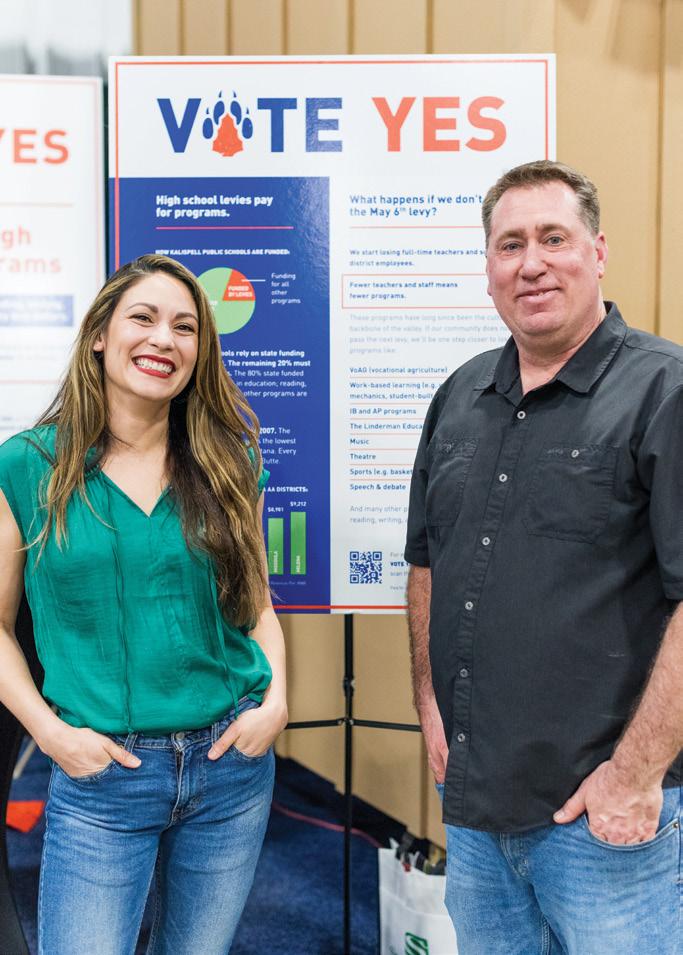
gether and tag-team when needed. They consider themselves equal coworkers on the same team, where neither is the boss. Their shared goal is to continue to grow the Flathead Building Association’s membership (currently at 425 members) and make a difference to more new builders and their customers alike.
Upcoming events include Putt Putt Palooza on April 10, 2025. This event will be a chance to network and showcase for allwhether for the mini-golf pro, the creative course architect, or just someone who is in it to win it. FBA members are encouraged to apply to design and build a minigolf hole for the event.
The annual Parade of Homes will feature up to 12 homes around the valley this year. The parade is held in September and offers a unique opportunity to tour a variety of beautiful newly built homes in the affordable, luxury, and dream home categories, as well as talk with the builders, their staff, and their suppliers for a truly interactive and informative experience.
, a service to connect potential clients with builder members of the Association. Interested clients submit a brief project description, which is then reviewed and shared with FBA Member Builders to assist in finding a good match of available contractors for their project. It can provide a lot of peace of mind for the client, knowing that FBA members have been vetted and have pledged to adhere to a standard of best practices in the industry. Additionally, the FBA is happy to continue to provide additional resources for the next steps throughout the process of building the home.
“Construction can be a challenging industry,” said Ashleigh. “The FBA’s resources, expertise, and educational opportunities can help contractors build a better product, build a better business, and create a more positive work environment.”
For information about the Flathead Building Association or any of their upcoming events, visit www.buildingflathead.com or call (406) 752-2422.


Written by Gwenda C. Jonas, MD

Pelvic pain has many causes. One less commonly discussed cause is pain from Pelvic Floor Dysfunction (PFD). This is pain within the pelvic floor muscles caused by weakness, spasm or lack of coordination. It may be felt in the lower abdomen, pelvis, vagina, external vaginal area, rectum or bladder. This pain may be present constantly, intermittently, or with certain activities including exercise, prolonged sitting or sexual activity. The pain is often described as achy, heavy or burning in nature. It generally comes and goes over time. Pelvic muscles often have discreet knots known as trigger points. Touching or pressure on these trigger points can result in pain, and symptoms such as heart racing, sweating, tearfulness, coldness, and even a runny nose can occur. Symptoms may be “referred” to other areas and manifest in different ways, such as having to urinate frequently or suddenly, having burning with urination, or even experiencing vaginal or vulvar itching and burning.
It is not understood exactly how PFD is caused. There are twenty-eight pelvic floor muscles, many of which form a “bowl” at the base of the pelvis. These muscles are involved in supporting our posture, bowel, bladder and sexual function. Oftentimes, these muscles must contract asymmetrically, predisposing to muscle tension. And because all the muscles of this area work together, dysfunction in one muscle may eventually lead to dysfunction in other muscles over time.
Possible causes of PFD include acute strain, chronic overuse, poor posture, scar tissue or trauma. Trauma can be small repetitive events or a single significant event like childbirth, surgery, even a fall. Certainly, sexual trauma may result in long-standing pelvic pain and PFD. The pelvic floor can be affected by psychological as well as physical stresses. Often, we subconsciously hold stress in our muscles, in-
cluding those of our pelvis. Prolonged muscle contraction may result in decreased blood flow and oxygen in the tissue. This in turn causes release of substances that cause pain and can even change how pain is perceived by the body. Ongoing pain in one area may cause the central nervous system to be overly sensitive, magnifying the perception of pain in another area.
Many women with pelvic floor pain also have endometriosis, painful bladder syndrome, pain with intercourse, painful periods or irritable bowel syndrome. It is unclear how these are related to each other or if, in some cases, one may cause the other.
A medical professional, most often a gynecologist, will discuss the history of symptoms and then perform a physical exam. This exam should include an external exam of the lower abdomen, lower back, buttocks, and legs, fol-
lowed by a careful and detailed gynecologic exam. Special attention will be paid to the muscles of the pelvic floor, putting pressure on them one at a time to determine if they are tight, tender, and whether pressure results in a woman’s symptoms. In addition, a woman may be asked to try to tighten or relax pelvic floor muscles during the exam. A pelvic ultrasound will often be ordered to evaluate for other causes of pain.
Treatment most often requires a combination of approaches. The most important treatment for pain of pelvic muscular origin is pelvic floor physical therapy. This involves pelvic floor muscular strengthening, biofeedback, and sometimes electrical stimulation. It should be performed with a physical therapist specifically trained in pelvic floor therapy. It may take 3-4 months to begin to see improvement. In some instances, pelvic floor physical therapy may take as long as 12 months.
There are twenty-eight pelvic floor muscles, many of which form a “bowl” at the base of the pelvis. These muscles are involved in supporting our posture, bowel, bladder and sexual function.
Medication therapy will often also be needed. Medications used may include non-narcotic medications that affect how our bodies process pain, anti-inflammatories, muscle relaxants, and vaginal estrogen or anesthetic gel (narcotic medications are avoided due to the risk of addiction). Some antidepressants are used to affect the way pain is processed by our nervous system. In addition, anxiety and depression can result in muscle tension, therefore, decreasing psychological stress will help to relieve pelvic muscle tension. Occasionally, actual injections of medication into the muscles themselves may help make the diagnosis or relax muscles for physical therapy work.
Counseling with cognitive behavioral therapy has been demonstrated to be extremely helpful for some patients. This involves seeing a counselor who specializes in training patients to identify stress or psychological triggers that result in tightening their pelvic muscles. A patient can then learn to break the cycle by consciously relaxing muscles in response to triggering events. In addition, if the pelvic pain is associated with physical or sexual abuse, counseling may help begin healing of psychological trauma.
Home exercise programs, yoga for pelvic pain relief, Pilates, or stress-reduction techniques are often incorporated.
Treatment of coexisting conditions such as endometriosis, pelvic or abdominal scar tissue or ovarian cysts may be necessary.
It is particularly important to realize that pelvic pain of muscular origin is often a chronic condition that will wax and wane over time. A woman may go through therapy, resolve the majority of her symptoms and still have flare-ups from time to time. Recognizing these flares and immediately beginning a regimen that has been found to work for her in the past will decrease the severity. Occasionally, a full course of physical therapy and other therapies may need to be repeated for severe flares.
See your medical provider and ask for a referral to a gynecologist with expertise in pelvic pain. If you do not have a primary care provider, you can make an appointment with a specialist directly.
More Information: International Pelvic Pain Society: www.pelvicpain.org
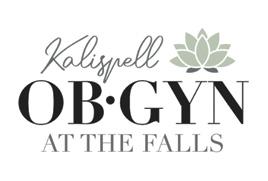
Gwenda C. Jonas, MD, FACOG is a board-certified OB/ GYN who has practiced with Kalispell OB/GYN since 2001.
Dr. Jonas received her undergraduate degree from the University of the South in Sewanee, Tennessee, and her medical degree from the University of Alabama. She completed her residency at Good Samaritan Regional Medical Center in Phoenix, AZ. She is a Fellow of the American College of Obstetricians and Gynecologists, Board-certified yearly through the American Board of Obstetrics and Gynecology and a member of the American Association of Gynecologic Laparoscopists.
She has served as Chief of Staff of Kalispell Regional Medical Center, as a Kalispell Regional healthcare board member, and as board chair. She has served on numerous committees at Logan Health, including Medical Ethics, Mass Casualty and most recently as Logan Health Section Chair of Gynecology.
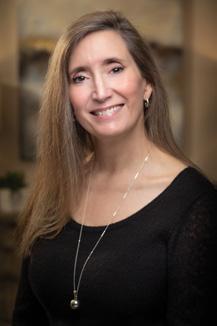
Dr. Jonas specializes in early obstetrics and gynecology, including in-office hysteroscopy and endometrial ablation procedures . She has a special interest in minimally invasive and robotic surgery, as well as treatment of pelvic organ prolapse, incontinence and infertility. Her passion is providing a caring, supportive, and pain-free environment for women to obtain the care they need and deserve.
Dr. Jonas and her husband, Dr. Ken Jonas, are delighted to call Kalispell their home. They enjoy rafting, fishing, skiing, and kayaking.

By Kristin Chaney

Mental health affects all of us. Whether it’s a child struggling with anxiety, a friend battling depression, or a parent navigating their own mental wellness, mental health is something we can no longer afford to ignore. The reality is that mental health, whether good or bad, is a part of life, and it’s time we normalize talking about it.
At Shodair Children’s Hospital, we believe that every child in Montana deserves the opportunity to heal, grow, and reach their full potential. Shodair is more than just a hospital, it’s a place where hope, healing, and resilience come together. With the right support, children can overcome even the most difficult challenges and create a brighter future, not just for themselves, but for their communities.
To help start important conversations and make mental health accessible to kids, we are
launching a brand-new children’s book, The Bison and the Firefly . This heartfelt story follows Hope the Firefly, a beacon of light guiding the way, and Thunder the Bison, a symbol of strength and perseverance. Together, they teach children about resilience, belonging, and finding courage in difficult times.
“We are excited to share the story of Hope with our great state and are grateful for the incredible support from Montana,” said Joe McClafferty, Chief Development Officer. “Together, we can bring light and hope to children and families across Montana.”
This book is more than just a story, it’s a tool for families, schools, and communities to begin open, honest discussions about mental health in a way that children can understand. Through Hope and Thunder, kids learn that struggles are normal, asking for help is okay, and no one has to face challenges alone.
“This Hope Campaign is not only a way to bring support to Shodair, but also a creative
way to engage with us,” said CEO Craig Aasved. “The development of Shodair mascots is a way for all of Montana to engage with us regardless of age, location, or financial means. I look forward to seeing how this initiative can become part of the Shodair culture, and I hope everyone gets involved.”
“I can't wait to see the impact of the Hope Campaign! By speaking through Hope and Thunder, we can connect with kids in a way they truly understand. I look forward to seeing the hope in each child’s face as they read the book, knowing they are part of a caring community and that they are not alone. Together, we will find hope as we help each other through the toughest storms.” – Kristin Chaney, Marketing and Brand Strategist
Shodair’s impact extends far beyond our doors. Through The Bison and the Firefly children's book, community events, youth camps, and our mascots, Hope the Firefly and Thunder the Bison, we are making mental health conversations accessible for all ages. By engaging with schools, social media, and in-per-


son gatherings, we are creating opportunities for children and families across Montana to connect, learn, and find hope.
In collaboration with local Helena district schools, students will design flags inspired by Hope and Thunder. These flags will be showcased in a community art show, and the winning designs from each school will be displayed at Shodair for one month each year. This program encourages students to actively engage with the themes of hope and resilience while fostering a deeper connection to Shodair’s mission.
To give back to our community and share the message of hope, Shodair is hosting Hope and Thunder Days, a two-day event dedicated to fostering resilience, connection, and joy. Families will have the opportunity to participate in fun activities, meet inspiring athletes, interact with the new mascots, and send their kids to a free basketball skills camp. This event is Shodair’s way of bringing people together, creating lasting memories, and reminding everyone that no one has to face their struggles alone. This event is currently scheduled for July 31 & August 1, 2025.
Through Hope and Thunder, kids learn that struggles are normal, asking for help is okay, and no one has to face challenges alone.
The need for pediatric mental health support has never been greater.
• Suicide is the leading cause of preventable death among Montana youth ages 10–14, occurring at three times the national rate.
• Nearly 20% of Montana youth aged 12–17 experience severe major depression, ranking Montana 48th in the nation for youth mental health outcomes.
• According to the 2023 Montana Youth Risk Behavior Survey, many high school students reported persistent sadness, hopelessness, and even thoughts of suicide.
These numbers are staggering, but they don’t have to define our children’s futures. Shodair is working to change the conversation, reduce stigma, and create real solutions for Montana’s kids.
We are offering The Bison and the Firefly free of charge because we believe every child deserves access to the support and resources they need. But we can’t do it alone. Schools can contact Shawna Pieske at SPieske@shodair.org to schedule a book delivery.
By supporting the Hope Campaign , you help us bring hope directly to Montana’s children through:
• Mental health resources for families and schools
• Community events that foster resilience and belonging
• Increased awareness and conversations around mental health
If you’re interested in learning more about the Hope Campaign and how you can support this mission, visit https://shodair.org/hope-campaign/ or contact Kristin Chaney, Marketing and Brand Strategist, at kchaney@shodair.org.
Together, we can create ripples of resilience, courage, and hope across Montana.
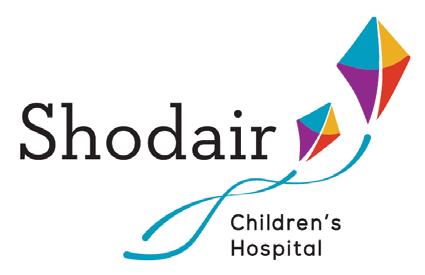

By Dr. Tom Flass and Brittany Coburn NP-C
In our last article, we kicked off the Six Pillars series with a brief discussion of nutrition. As you recall, the Six Pillars of Health are the fundamental lifestyle factors that determine lifespan (how long you live) and healthspan (how long you can avoid major diseases). They include:
a stage of Deep (delta wave) Sleep, then a stage of REM Sleep. Each full cycle lasts 90-120 minutes and people should go through 4-6 cycles per night. For the math whizzes out there, that means a bare minimum of 6-7 hours of sleep is required, and potentially upwards of 9+ hours for some folks, even more for kids! Sleep requirements vary by age and are listed below, but it is worth noting that teens need more sleep (8-10 hours nightly) and are among the most under slept members of our society.
Infants-:12-16 hours
Toddlers: 11-14 hours
School age: 9-12 hours
Teens: 8-10 hours
Adults: 7 hours minimum
Sleep issues and insufficient sleep are an epidemic in our country, and we are paying the price for it. Think you don’t need more than a few hours of sleep? Think again. Stubborn weight loss or prediabetes? Could be poor sleep. Hormones out of whack? Take a look at your sleep. Worried about Alzheimer’s or heart disease? You better get your sleep dialed in. Tired and brain fog all the time? You get the pattern.
In fact, you would be hard pressed to find an area of human health that isn’t impacted by sleep, or lack thereof. Why is it so important? Sleep is far more than a few hours that your body gets to chill out at night. There are specific cycles and stages of sleep during which vital processes occur that are absolutely necessary to have a healthy body and brain. This is what differentiates between sleep and rest. To have restful, restorative sleep you need to go through all 4 stages of sleep to complete 1 full sleep cycle: 2 stages of Light (non-REM) Sleep, then
Sleep deficiency especially in teens is no joke and is being linked to the mental health crisis we are seeing in today’s youth. Rising rates of anxiety, depression and suicide may be linked to poor sleep quantity and quality. It very well may be contributing to the high rates of ADHD as well as the obesity and type 2 diabetes epidemics. Even a few weeks of poor sleep can make a person insulin resistant and on the road to pre-diabetes. Good sleep for kids and adults must be a non-negotiable top priority if we want to have good physical and mental health.
When we look at what goes on during delta wave and REM sleep, we can see why it is so importantto the brain especially! Deep delta wave sleep is when the brain “takes out the trash” and gets rid of unwanted debris and substances that can be toxic to brain cells. It is also the most restorative stage where the body repairs itself and rebuilds and strengthens the immune system. REM sleep appears to be important for memory formation and consolidation.
Being unconscious and sleeping are two different things. This is why both alcohol and even certain sleep medications that render a person unconscious without achieving delta wave or REM sleep are so dangerous long term. You might not be awake, but without those important sleep stages, you lose all the benefits of a good restful night’s sleep and your risk for the other consequences of sleep deprivation actually go up.
Sleep researchers like Matthew Walker PhD caution against the powerful “sedative hypnotic” prescription sleep drugs, or even Benadryl (common in OTC sleep medications). These medications (often used with alcohol) are bad news for your brain when used regularly.
So what can you do to safely improve your sleep (or your kids sleep)?
#1- Improve your Sleep Hygiene. Multiple factors in your environment can impact the quality of your sleep. Avoid caffeine after noon. Some may need to avoid it after 9am or quit entirely if they are a slow caffeine metabolizer. Develop a sleep ritual, that may include some relaxing tea, a hot bath or shower as part of a wind down time before bed. At night, the bedroom should be cool, quiet and DARK. Turn down the heat at night to 65. Turn down the lights in the evening. Excessive light, especially blue light from TV, computer, and our electronic devices can interfere with sleep. Get the TV and computer out of the bedroom. Don’t bring your devices in bed with you. Try using red lights in the evening and/or wearing blue light blocking glasses to help transition to sleep. Another important factor with setting your “sleep clock” is to be exposed to bright, full spectrum light first thing in the morning. Optimally this is sunlight, but the full spectrum “happy lights” also known as SAD lights in the morning can also help set your sleep/wake cycle.
Get the TV and computer out of the bedroom. Don’t bring your devices in bed with you.
#2 Get screened for sleep apnea if there is any concern based on excessive snoring, abnormal breathing patterns when asleep, unexplained chronic fatigue or headaches. Talk to your PCP about a sleep study at home or a sleep center as a screening for sleep apnea. Sleep apnea increases risk of heart attack, Alzheimer’s, and type 2 diabetes to name a few so proper screening is well worth it. There are several potential treatments including CPAP and mandibular advancement devices (MADs) that can be life changing and potentially lifesaving.
#3 Exercise earlier in the day can dramatically improve the quality of your sleep. ‘Nough said.
#4 Incorporate mindfulness exercises, sleep meditations, or CBT-I (Cognitive Behavioral Therapy for Insomnia). Especially for busy brains that have a hard time shutting off, these techniques and tools can change the way your brain works to be more conducive to sleep. Multiple programs and apps are available.
#5- Supplements and Herbs:
Although not for everyone, some nutritional supplements and herbs can be helpful for sleep. Start with 200-300 mg magnesium as glycinate, citrate or threonate in the evening that can act as a muscle relaxer and boost the calming neurotransmitter GABA. The herbs
of GABA and may help with sleep quality and can be taken as capsules, liquid extracts or tea (watch out for microplastics in certain tea bags!). Some people get help from a few milligrams of the sleep hormone melatonin or take the serotonin/melatonin precursor compound called 5-HTP. For those stressed-out folks, a supplement called phosphatidylserine may help reduce the stress hormone cortisol in the evening, making sleep a bit easier. As always, check with your PCP to make sure these are safe for you.
Make sleep a priority for you and your kids. It is one of the wisest investments you can make for your health.
Check out our recent podcasts about sleep and the other Six Pillars of Health on “The Aware Families Podcast” found wherever podcasts are hosted. If you have health concerns and are looking for a more holistic balanced approach, come see us at Functional Medicine Associates of Montana. (www.functionalmedassociates.com)
Tom Flass MD is a gastroenterologist who practices Functional Medicine and Integrative Gastroenterology.
Brittany Coburn NP-C is a family nurse practitioner practicing
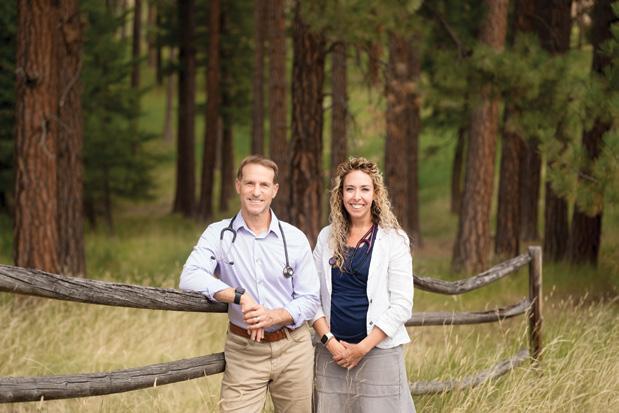




How long have you been with the Brendan House?
I came to Brendan House as a physical therapy student working on my master's degree in January of 2000. Upon completion of my degree, I began my career at Brendan House as a staff physical therapist in May of 2000. I have been here ever since!
What is your background?
I grew up in Oklahoma. I received my bachelor's degree in life sciences from Kansas State University. I then went on to the University of Nebraska Medical Center in Omaha to receive my master's degree in physical therapy. I have always enjoyed acts of service and pursuing a career in health care seemed like the perfect fit. Although I participated in many sports in high school, the sports medicine field did not interest me. The relationship building that is part of working with the elderly became my passion and I have always been in the long-term care setting.
What is your role as the administrator?
At the time I entered physical therapy school, it was quite competitive to be accepted. More difficult than that were the training and testing requirements to receive my Nursing Home Administrator license. I completed this goal in the spring of 2013. I consider that a major accomplishment! Many people do not realize the multitude of regulations and knowledge that is needed to understand all the aspects of operating a skilled nursing facility. Devoting the time to learn what is necessary and keep up on regulatory changes is a constant challenge. I am honored to serve in the role of Nursing Home Administrator and strive to main-
tain compliance and bring the best to the residents we care for at Brendan House.
What makes the Brendan House special?
The People!!! The staff members at Brendan House have a heart to serve. It is inspiring to witness the dedication of so many people. The way in which our team cares for those in their time of need is truly special!
What do you enjoy most about your job? What is the most rewarding part of your job?
I love having a true sense of purpose each and every day - that the lives of others will be enriched by the care pro vided to them. When you are support ing the care model that others depend on, it is not only a huge responsibility, it also comes with huge rewards and blessings!
How do you like to spend your free time outside of work?
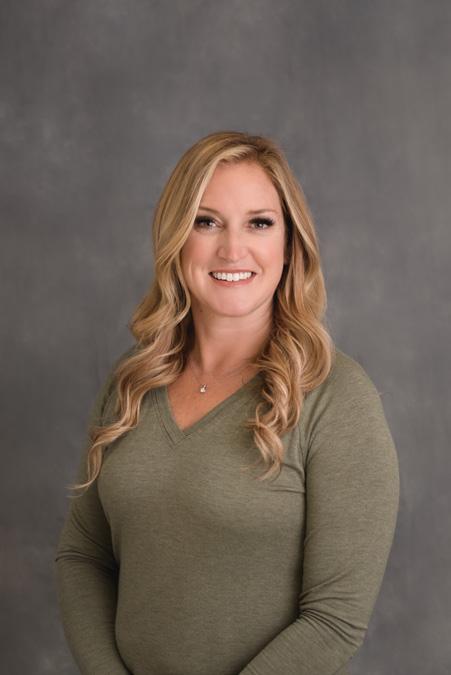

I have an amazing husband, and we have been blessed to have a wonderful life here in the Flathead Valley. Joe and I will celebrate 25 years of marriage this fall! We have three fantastic children - Luke (21), Owen (18) and Lizzy (16). We keep plenty busy with everyone's activities, and we enjoy taking in all the recreation Montana has to offer. Taking our pontoon boat out on Flathead Lake in the summer months is my happy place!
Brought to you by

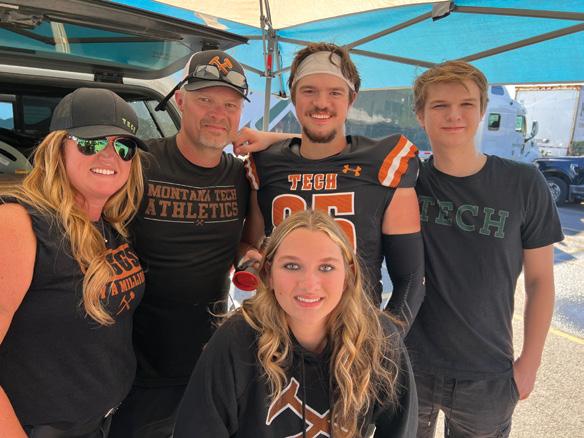

By Chris Leopold
For 40 years, Logan Health’s Brendan House has been the cornerstone of compassionate care in the Flathead Valley, providing skilled nursing, rehabilitative services and long-term care with a commitment to dignity and respect. Since its opening in April of 1985, the facility has grown with the times from a modest longterm care center into a 110-bed facility that continually evolves to meet the community’s needs.
The vision for Brendan House began with Sister Mary Brendan Phelan, RSM. From 1972 to 1982, Sister Mary Brendan served as a nurse at Kalispell General Hospital and witnessed firsthand the challenges faced by patients who required continued care after leaving the hospital. She recognized the need for a place where individuals could receive long-term care with dignity and respect, bridging the gap between hospital care and the support available at home. Her compassion and commitment to community health led to the establishment of Brendan House as a non-profit facility, offering a continuum of care that was revolutionary for its time.
In a tribute to her dedication, the facility was named Brendan House. Sister Mary Brendan was completely unaware of this decision until the unveiling ceremony. Those who knew her recall that she would have never agreed to such recognition if she had known in advance, but they all felt it was necessary to celebrate her selfless service and the profound impact she had on the community.
“Sister Mary Brendan was the heart of this place in the beginning,” said Cheryl Lowe, who has been with Brendan House since its opening and now serves as the supervisor for activities and plant op-
erations. “She recognized a need in the community and built something that went beyond just providing care. She built a community, a home for people who needed it the most.”
When Brendan House first opened, it was rare to find a facility that combined nursing services, rehabilitation, personal care, spiritual support and engaging activities all under one roof — especially in a community the size of Kalispell. Even more unique was its proximity to the hospital, which allowed residents to access specialized medical services without needing to be transported a long distance. This seamless integration of care, paired with the personal touch of a non-profit mission, set Brendan House apart as a center for caring for families in the Flathead Valley. Deb Wilson, who served as the administrator for much of the 90s, recalled the feeling that Brendan House provided: “It was never about the money —the facility was certainly not profitable— it was about caring for patients who wouldn’t otherwise have access to this kind of care. When they can’t be at home, you need to get them the best supportive environment.”
Since its founding, the Brendan House has evolved to meet the changing needs of the community. The first significant expansion came in 1990 with the
addition of the Lake Pod, to include additional private rooms for end-of-life care. Later in the 90s, one of the long-term units (Forest Pod) was converted to a short-term care unit, which introduced transitional care to the facility. This provided a place for patients to recover after surgery or illness before returning home and filled a critical gap in the continuum of care. The success of this model led to the opening of the Glacier Pod in 2005, further expanding the facility’s capacity and allowing for more post-acute care transitions. These expansions increased the total capacity from the initial 69 to the current 110 beds, allowing Brendan House to better serve the community’s growing needs.
Over the years, the patient population at Brendan House has shifted in response to changes in health care services. When it first opened, most residents were ambulatory, requiring minimal assistance. However, the evolution of home health care and other outpatient services led to more of a focus on complex patient populations at Brendan House. Today, the facility provides three levels of care: Transitional Care, Long-Term Care and Comfort Care, each designed to meet the unique needs of its residents while maximizing independence and quality of life.
The design of Brendan House has also adapted to enhance resident companionship and nursing ef-
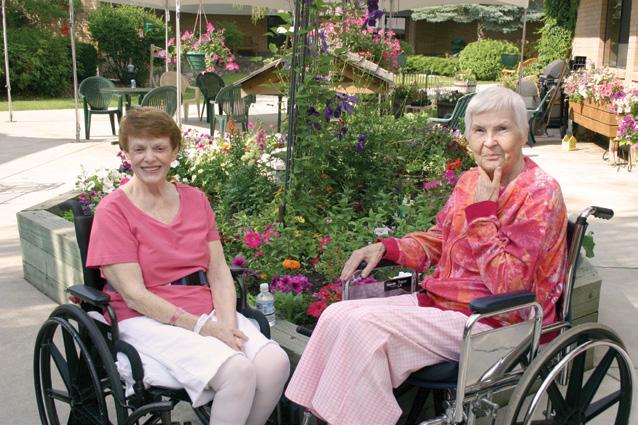
ficiency. The facility is divided into six pods, small neighborhoods of 18 to 20 residents each, clustered around common living and dining areas. This layout creates a sense of community and ensures that staff are always just a few steps away, ready to provide care and support. The courtyard, beautifully landscaped and thoughtfully designed, serves as a peaceful, therapeutic space where residents and families can gather and find comfort.
One of the most significant challenges Brendan House has faced in its history was the COVID-19 pandemic, which profoundly impacted long-term care facilities across the world. Brendan House swiftly adapted to the new realities of pandemic life by implementing safety protocols, such as window visits, virtual end-of-life goodbyes and strict infection control measures. “I facilitated a lot of end-of-life visits virtually,” Cheryl remembered. “As hard as that was, it was incredible to be able to connect families during such difficult times.”
Despite the challenges, the staff stepped up in the face of adversity. “People dug down and became brave,” said Kelly Bilau, who has been at the facility for 25 years and has served as the facility’s administrator for the last 12 years. “We adapted, we learned, and we continued to provide the highest level of care possible.”
Beyond the clinical care it provides, the Brendan House offers a variety of activities, which play an important role in maintaining residents’ emotional and social well-being. Seasonal celebrations like Valentine’s Day, Mother’s Day and Christmas bring joy and a sense of normalcy, while engaging activities, such as crafts, music and community events foster companionship and connection. According to Cheryl, these moments of joy help make Brendan House feel like home.
As Brendan House celebrates its 40th anniversary, it remains a trailblazer for compassionate care and a cornerstone of the Flathead Valley community. The team continues to look to the future, exploring ways to expand and enhance its services to meet the evolving needs of the community.
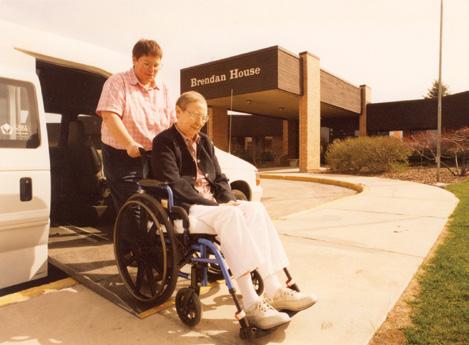
The legacy of Sister Mary Brendan lives on through the dedicated staff who carry forward her vision of compassion, dignity and community. “Brendan House is more than just a building,” Cheryl reflected. “It’s a home. It’s a family. And after 40 years, it still feels like that every single day.”
For more information about the Brendan House, to make a gift to support this facility and its programs, or to explore ways to continue to support health care in our community, please contact Michael Barth at the Logan Health Foundation at mbarth@logan. org or (406) 751-6930.




By Dr. John F. Miller DDS - SMILE MONTANA

I have a big announcement really quick before I dive into any boring dentist talk. Some of you know that I got my first job after dental school in Columbia Falls on Nucleus Ave. I say I got my first job but guess who I worked for? Me. Anyway I found myself in a great little office alongside great coworkers in a not so amazing building. A stout little drab cinderblock building.
Over the last 14 years I have loved to tell folks, “don’t be fooled by the building, cutting edge and high-tech dentistry is happening inside those walls.” Actually, I guess I didn’t love saying that enough because I tired of it and went ahead and built a brand new Smile Montana location in Columbia Falls. How new? Spanking baby!!
It looks awesome too. Go check it out, drive by and see our huge logo on the building. 400 12th Ave. W. I’m just really excited and wanted to share that with you all. Now into the real stuff.
There is one question I almost always get asked when someone finds out I’m a dentist. “So like, have you been totally checking out my teeth this whole time?” The answer to that question is...like totally 100% yes. I’m sorry, I’m a teeth guy. A “Smile” guy. It gives a whole new meaning to “my eyes are up here.”
What precisely am I looking at during that quick glance? There are so many biometric
cues that my brain absorbs in fractions of a second. To the lay person there are 3 types of smiles. The first of these is the “ Great Smile .” These are the smiles that are putting points in the win column. We think about these smiles long after we see them. These are the real smiles that are infectious. We crave these smiles.
The second type of smile is...you guessed it, the “ Not So Great Smile .” These have the opposite effect of Great Smiles . They work against their owners and are memorable for the wrong reasons. Lastly, we have the 3rd type of smile. This smile is neither “ Great ” nor “ Not So Great .” This smile does not get noticed. This is the “ Meh Smile .”
This sounds a little shallow I know, so maybe I can dig my way back into your good graces here. I am not a lay person. I have chosen over the last 16 years to study every nook and cranny of the human mouth and have looked at 10’s of thousands. I mentioned biometric cues earlier. Biometry refers to the measure-
ment and analysis of people's unique physical characteristics.
These cues include the gingiva (gums), the lips, the shape, shade, and contour of the teeth, the cleanliness, the smell, or lack thereof, and the eyes. That’s right, I mentioned a Great Smile is one that’s genuine and the eyes inform us of a smile's sincerity. These cues are like the paints on the artist’s palette that when mixed together form an altogether unique and individual picture. This picture we would all agree is greater than the sum of its parts, the individual colors themselves.
Now I’m going to give you my definition of a Great Smile . The smile that will catch my attention, in the right way, is the one that’s healthy
There are 3 types of smiles. The first of these is the “Great Smile.” These are the smiles that are putting points in the win column. We think about these smiles long after we see them.
and genuine. This is the smile of a child that is loved. The healthy part is easy, brush and floss daily, see your hygienist regularly, and make smart decisions when it comes to your diet. Making it real can be the challenge sometimes.
Knowing what I know now, I fully appreciate how extremely fortunate I was to have a Mom that was concerned and involved with my oral health as well as the oral health of my siblings. Brushing our teeth morning and night was a big deal around the Miller house. And without fail every 6 months we would load up the Chevy Comfort Craft Van and head into town for our routine teeth cleanings and exams.
These trips were pretty exciting for a variety of reasons. One, we missed school. And not just a little bit of school, we had to travel to see the dentist and there were 5 of us so it was an all-day affair. Reason number two, we got to go to Pizza Hut and we each got to choose a song out of the Jukebox. ( Metallica’s Black Album Anyone?) We would hope and pray that we didn’t have any cavities, because we didn’t want the precious Pizza Hut experience to be ruined by numb lips and tongues.
I remember sitting in those dental chairs for what seemed like hours studying the wallpaper. The wallpaper consisted of photographs blown up to the size of the wall in the dental operatory. One room had horses, another room had forests, and the final room had lakes and streams. Included with all of these however, were amazing mountain views in the background. I remember these wall sized portraits and chuckle, because I now know that all of these photographs were of Glacier National Park.
Being from the dusty and barren high-desert plains of Northeast Arizona, these pictures might as well have been taken on Mars. I was transfixed by the clear and clean water. Fascinated by the snow-dusted mountains, I could just imagine the crispness of the air. The horses I was lukewarm on. Don’t send me any hate mail horse lovers.
Then the stars aligned and my family drove from Arizona to Edmonton, Alberta with an extended stop in the Flathead Valley and Glacier Park. I could not, under any circumstances, peel my face away from the car window. Lakes, Streams, Rivers, and Mountains OH MY!! This was the place. It was just like the pictures in the dental office, only without that dental office smell and the inability to move my lips.
The violent roar of Upper McDonald Creek was the soundtrack to an 11-year old’s decision to come back to this amazing place as often as possible and to someday make it home. Ironically it all started in a dental chair in Northern Arizona, where I was making sure to keep my smile healthy because one day I was going to live in Montana, where the smiles come easy and are always real.
Happy Spring Y’all!!
